business supplies and beyond
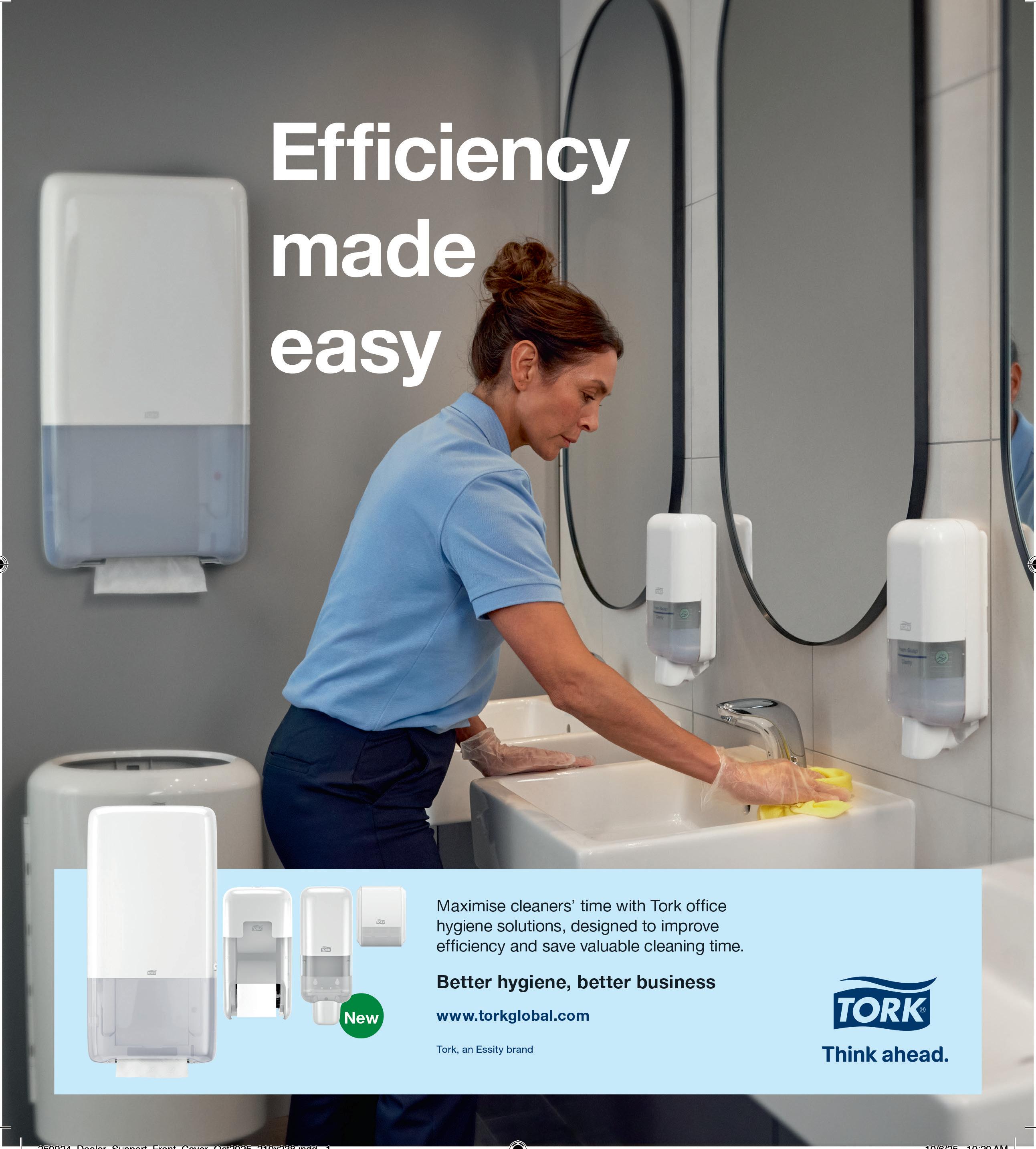
business supplies and beyond


business supplies and beyond

business supplies and beyond

One of the big themes running through this issue is technology. Every year, Workplace360 makes a point of shining the spotlight on the industry’s technology solutions providers – giving them a platform to share not only what they’re working on, but also to highlight the broader trends shaping the digital future of our sector. This year is no exception.
What’s clear is that tech suppliers have been busier than ever. Over the past 12 months, we’ve seen a flurry of innovation: updates to existing platforms, entirely new
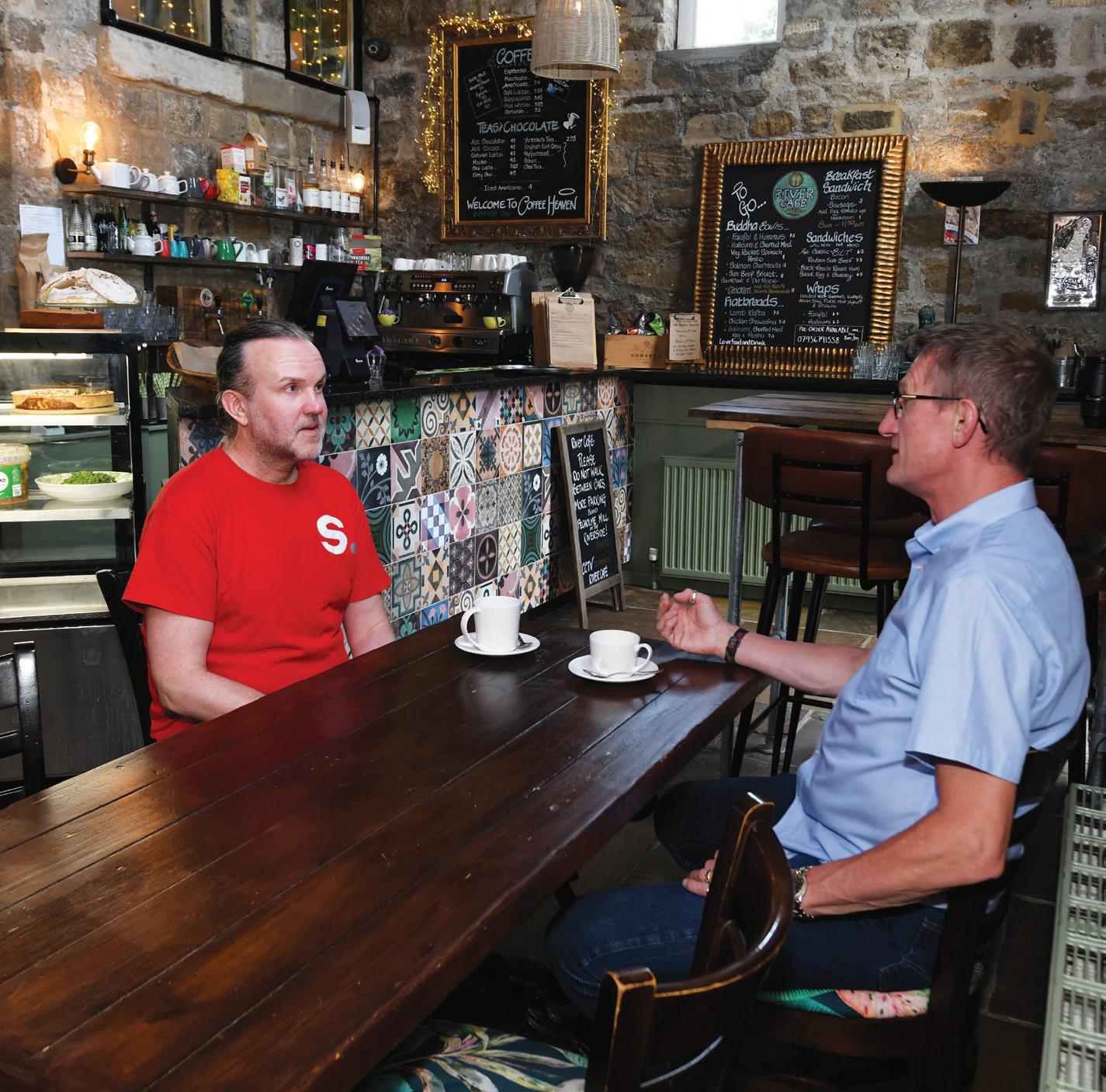
That’s how you do an interview – with a proper Yorkshire brew in hand! Workplace360 CEO Steve Hilleard (right) headed to Otley to sit down with Superstat Managing Director Alex Dunn (left) for this issue’s In conversation with...


EDITORIAL
Workplace360 Editor
Michelle Sturman 020 7841 2950
News Editor
Andy Braithwaite +33 4 32 62 71 07
Assistant Editor Kate Davies
OPI Editor
Heike Dieckmann
EVENTS
Events Manager
Lisa Haywood


apps designed to streamline workflows and a growing wave of ventures into the world of AI. From automation and analytics to smarter ordering systems and digital collaboration tools, technology is becoming the beating heart of the workplace supplies channel.
It all bodes exceedingly well for the future – provided dealers are ready to embrace these advances and make technology a central part of their business strategy. Those that do will be well placed to harness its full potential (read Power play on page 34)
One dealer that has truly embedded technology into almost every facet of its operation is Dublinbased Purple Panda. As founder Gavin Kelly explained to me, every customer interaction is “analysed, tracked and personalised” to enhance the overall experience.
Just as crucially, the digital systems behind the scenes are constantly refined in collaboration with ECI Software Solutions and the company’s own in-house e-commerce specialists. The business has also fully embraced AI-driven analytics and automation to optimise performance and efficiency (read Purple reign on page 10).
As the year winds down, awards season heats up with the BOSS Awards (2025 shortlist on page 6) and the Stationers’ Innovation Excellence Awards (read Gold standard on page 50). Wishing all those shortlisted the very best of luck!
Michelle Sturman, Editor
SALES & MARKETING
Head of Media Sales
Chris Turness 07872 684746
Chief Commercial Officer Jade Wilson 07369 232590
Digital Marketing Manager Aurora Enghis
PRODUCTION & FINANCE
Head of Creative
Joel Mitchell
Finance & Operations
Kelly Hilleard
Ross Jones highlights cleaning and catering as the next growth categories for dealers
24 Talking point
Exertis Supplies Managing Director Matt Balcombe discusses how it’s business as usual as the wholesaler enters a new chapter 30 Thought leadership
Gary Naphtali reveals how change creates new business opportunities and growth

48 Heart of the industry
The workplace supplies sector once again unites in the Lake District to support cancer research
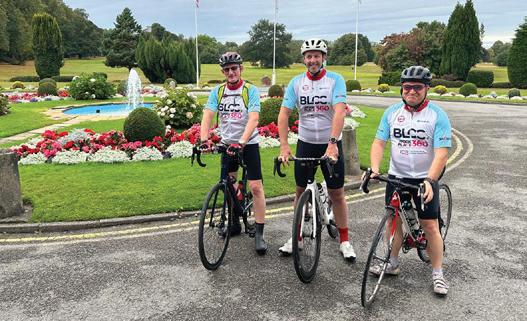
49 Heart of the industry
The Ride of Life 2025 raised vital funds for cancer research, while the Summer Clachan brought Old Friends together in Manchester for a lively evening of fellowship
50 Heart of the industry
John Livingston explains why the Stationers’ Company Warrant remains the ultimate mark of quality
54 Exposed!
Oliver Rowles, Prima Software
JGBM’s Carol Clarke explores how personal courage shapes leadership, drives smart risk-taking and builds resilient, innovative teams SMEs are creating agile, inspiring offices that rival larger corporates, reveals Alex Kerr



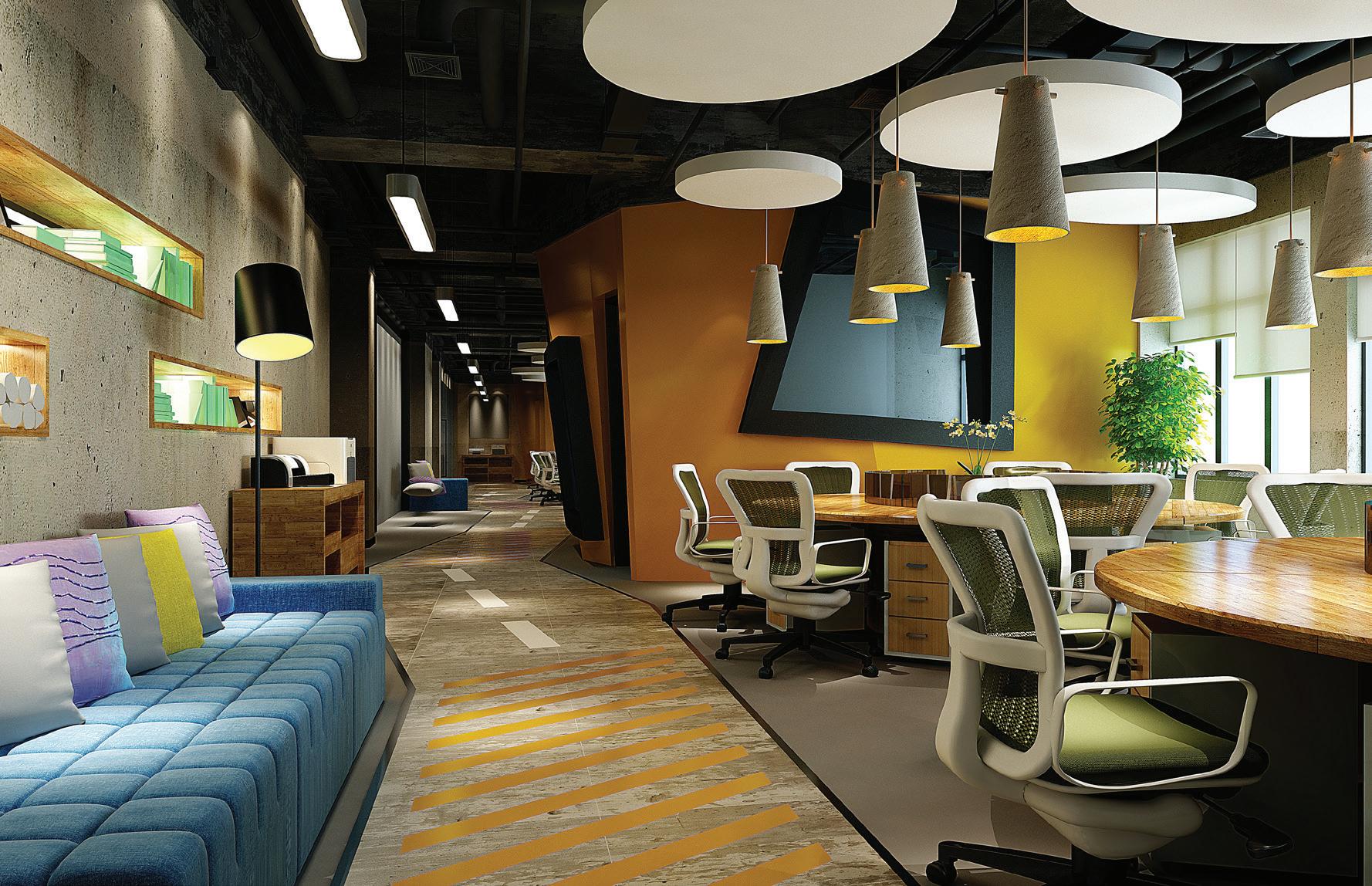


The BOSS Federation has revealed the shortlist for its annual awards taking place in November. The shortlist is as follows:
Brand Excellence
• Fellowes Brands
• Kensington EQ
• Pilot Pen UK
• The Cheeky Panda
Business Leader of the Year
• Adam Huttly, Red-Inc
• Andrew Gale, evo Group
• James Mckeever, Sovereign Business Solutions
Campaign of the Year
• Avery: Every Space
• Fellowes Brands: The WorkLife Coach
• Nemo Office Club: Keep It Local
• Nescafé: Let’s Partner Up for Good
• P-Wave: NHS England Cancer Awareness Partnership
Dealer of the Year (over £5 million)
• ACS Group
• Costcutters UK (Seated Furniture)
• Quills Group
• The Business Supplies Group
• United UK
Dealer of the Year (under £5 million)
• Aston & James
• Office Shop Direct
• The Office Works (Nationwide)
Diversity and Inclusion Award
• Essity
• Exertis Supplies
• Lyreco UK & Ireland
• SC Johnson Professional
E-business Award
• Durable UK
• evo Group
Independent Retailer Award
• Axminster Printing
• JPS Stationers
• Morgans Stationery
New Product of the Year
• Durabin Eco Range
• Dymo Label Manager 640CB
• Grace & Green Period Kits
• Katrin XL Dispenser
• Leitz IQ OptiMax Shredder
• Nescafé Barista
• Tork OptiServe
Outstanding Team of the Year
• Avery UK Customer Service Team
• Banner Stoke Team
• Exertis Supplies Operations Team
• Lyreco UK & Ireland Sustainability and Social Value Team
• Office Power Buying Team
• YPO Supply Chain Team
Professional of the Year
• Alex Winstanley, Banner
• Julie Hadley, evo Group
• Shona Patterson, VOW Wholesale
• Simon Weavers, The Cheeky Panda
Rising Star of the Year
• Amy Mettam, Banner
• Amy Remmer, VOW Wholesale
• Ashley Ainley, YPO
• Jade Young, Red-Inc
• Lisa Denby, Superstat
• Oliver Rowles, Prima Software
• Paige Morgan, Premier Vanguard
• Ross Ayley, Durable UK
Service Provider of the Year
• Comgem
• Dynamic Office Solutions
• Prima Software
• United UK
Sustainable Leadership Award
• ACCO Brands
• evo Group
• ExaClair
• MBM Omega
• Red-Inc
• The Cheeky Panda
Wholesaler of the Year
• Dynamic Office Solutions
• Exertis Supplies
• JGBM
• VOW Wholesale
The 2025 BOSS Awards – of which Workplace360 is a sponsor – will take place on 27 November at the Kimpton Clocktower Hotel in Manchester.
Codex has been named one of Ireland’s Best Managed Companies for the third consecutive year. The Dublin-based workplace solutions provider was recognised at the 2025 Deloitte Best Managed Companies Awards, placing it among the country’s bestperforming organisations.
Codex said that the award reflects its people-first approach, which this year has included a new partnership with autism charity AsIAm and the launch of a neurodivergent office products design and fit-out service. The company has also invested in employee wellbeing with initiatives such as a staff gym and progressive annual leave policies.
According to CEO Patrick Murphy, the recognition underlines the efforts of Codex’s employees and the support of its customers. He added that new partnerships and services launched this year will help the company maintain its values while continuing to grow.
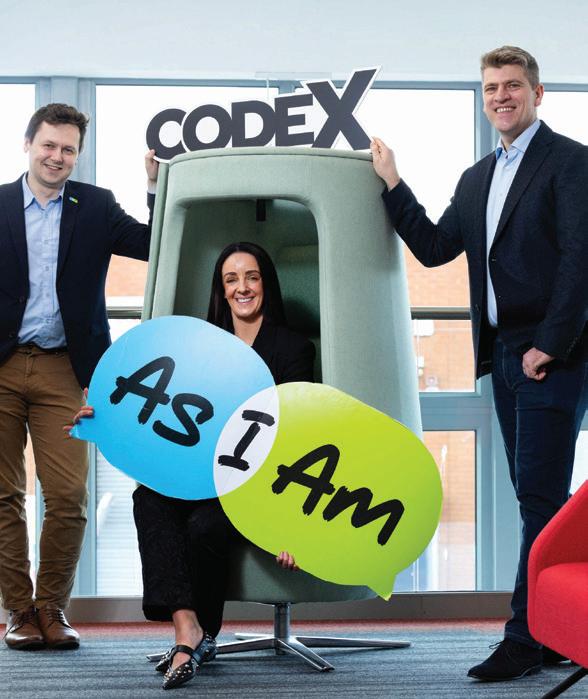

Integra Business Solutions and Office Friendly have announced the completion of their merger, creating a new entity called BLOC Group. It will be headed by Managing Director Jeanette Caswell (ex-Office Friendly) and Chairman Aidan McDonough (ex-Integra). Other key staff positions and further company details had not been made public at the time of going to press.
Integration of the two businesses is already well underway with a new membership portal, BLOCHub, being constructed to provide members with easy access to all BLOC services, solutions and self-serve content.
According to BLOC, its members can expect innovative marketing, smarter purchasing opportunities, invaluable technology partnerships and support, together with sustainability and training programmes.
McDonough commented: “By combining the strengths of two market-leading organisations, we have created an unrivalled platform of expertise and support.”
Caswell added: “We are incredibly excited about the future as BLOC and the benefits our combined resources, industry-leading solutions and new initiatives will bring to our members and key partners.”

The BOSS Federation has introduced a programme called NextGen Mentoring. The initiative – created by the BOSS Leaders of the Future committee – aims to connect experienced professionals with emerging talent across the workplace supplies industry.
Supported by the evo Foundation, the programme aims to foster meaningful career development and knowledge sharing across generations of professionals.
Free for BOSS members, NextGen Mentoring is menteeled, meaning that it’s up to the mentee to initiate contact and drive the relationship.


Renshaw joins PPS
Product Promotion Services (PPS) has welcomed Sharon Renshaw to its sales team.
She brings extensive knowledge with 30 years’ experience in the workplace supplies industry, including sales roles at Office Friendly and VOW Wholesale.

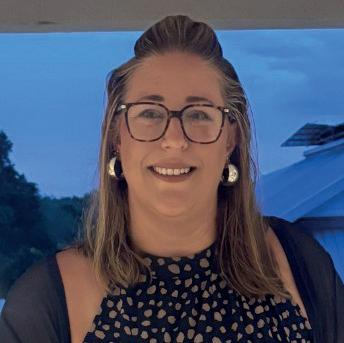
After more than a year as Head of Commercial Sales, Keeley Shepherd (left) will be leaving ExaClair later this year to pursue new opportunities within the industry. Meanwhile, company veteran Sam Bell (right) has been appointed Account Manager.
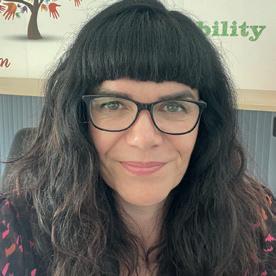
BOSS role for Viking’s Stafford
Sam Stafford, Head of HR at Viking UK & Ireland, has been appointed Chair of the BOSS People & Culture Forum. Stafford – an experienced HR leader – said that she is committed to strengthening collaboration across the HR profession and supporting organisations as they navigate an increasingly complex people landscape.
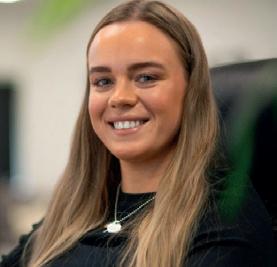
Promotion for Prima’s Clarke
Prima Software has promoted Molly Clarke to the position of Customer Care Manager.
Clarke joined the company in 2017 as a 17-year-old apprentice on the support desk. After completing her apprenticeship, she moved into a full-time role, later becoming Customer Care Supervisor – and now takes on the responsibility of leading the team in her new role.

Evolve IP appoints Global Sales Director
Evolve IP has named Alex Finn as its new Global Sales Director. Finn, who brings extensive experience in enterprise technology and partner-led sales, will be responsible for driving the company’s global sales strategy, strengthening relationships with partners and accelerating growth in new and existing markets – including the UK.
Public sector procurement organisation Crown Commercial Service (CCS) is preparing a formal tender notice for a new pan-government digital marketplace. CCS is seeking a platform provider to primarily service low-complexity spend on goods and services within public sector organisations.
The initiative covers a wide range of product categories, including stationery, office supplies and equipment, furniture, occupational safety, janitorial, education supplies, arts and crafts, first aid, packaging and branded uniforms.
Draft documents indicate that the chosen supplier must ensure that no more than 10% of deliverables ordered by buyers are its ownbrand goods. CCS is also requiring “proactive support” for government goals, such as encouraging SMEs and voluntary, community and social enterprises to register as vendors.
CCS said that the marketplace aims to reduce costs, improve procurement efficiency and simplify sourcing processes across government. It is intended to replace fragmented legacy systems with a more unified, scalable infrastructure.
The agreement is expected to run for four years from July 2026 and is valued at up to £1.2 billion. CCS plans to issue a formal tender notice on 28 November.
In other CCS updates, it recently confirmed the award of places on the government’s new £900 million print framework. The contract – which includes MFDs, MPS and digital workflow software solutions – is for a duration of four years and has been divided into five lots. Most of these were multiple supplier awards, with contractors including Canon, Konica Minolta, Kyocera, HP Inc, Ricoh and Xerox.
However, Lot 1 (estimated at £150,000) was a single-supplier award for an online purchasing solution. This lot – which was for MFDs and basic print management software – was weighted 100% on price and went to Canon. One of the awardees on the £20 million vendor-neutral consultancy services lot was Paragon Customer Communications, which acquired Office Depot UK & Ireland (now Paragon Business Essentials) last year.

The BOSS Business Supplies Charity (BBSC) has been named Small Charity of the Year at the annual awards of the Association of Charitable Organisations (ACO). The trophy was presented to BBSC Chair Kelly Hilleard (right), Trustee Sara Bennett (centre) and Secretary Liz Whyte (left) at an awards ceremony at BMA House in London as part of ACO’s 2025 annual conference.
“This award belongs to every trustee, volunteer and industry partner who continue to support people in the business supplies community when they need it most,” said Hilleard, adding: “Thank you for believing in us.”
Business services and print solutions provider Paragon has announced a new name for Office Depot UK, 12 months after acquiring the company as part of the wind-up of OT Group. As of 1 September, the reseller is officially known as Paragon Business Essentials, a move that its parent company says formalises its full integration.
In a press release, Paragon stated: “This rebrand marks a fresh chapter for the business that reflects our shared commitment to innovation, quality and delivering exceptional value for clients. [Paragon Business Essentials] will be a central hub for everything a workplace needs, including office supplies, cleaning and catering items, furniture and print solutions.”
Paragon COO Clem Garvey added: “Having business essentials as part of our extensive range of solutions means we can continue to support businesses of all sizes and help our clients navigate their evolving workplace needs with a single, trusted partner.”
Paragon said that the addition of the Business Essentials unit positions it as a one-stop shop and “eliminates the need for [customers] to manage multiple suppliers and invoices”. One development highlighted was the expansion of the product catalogue from 40,000 to 60,000 items.
Ryman and Robert Dyas add photo prints
Ryman and sister company Robert Dyas have signed a five-year partnership with photo printing specialist CEWE.
The agreement will see CEWE’s Photostations installed in the majority of Ryman and Robert Dyas stores, with the rollout due to be completed this autumn. The move follows a successful trial and will bring instant photo and ID printing services to more than 200 UK high streets.
The Photostations offer instant photo printing, biometric-compliant ID photo services and access to CEWE’s full product range via integrated online ordering.

The rollout forms part of the Theo Paphitis Retail Group’s broader strategy to enhance the in-store experience and introduce new valueadded services.
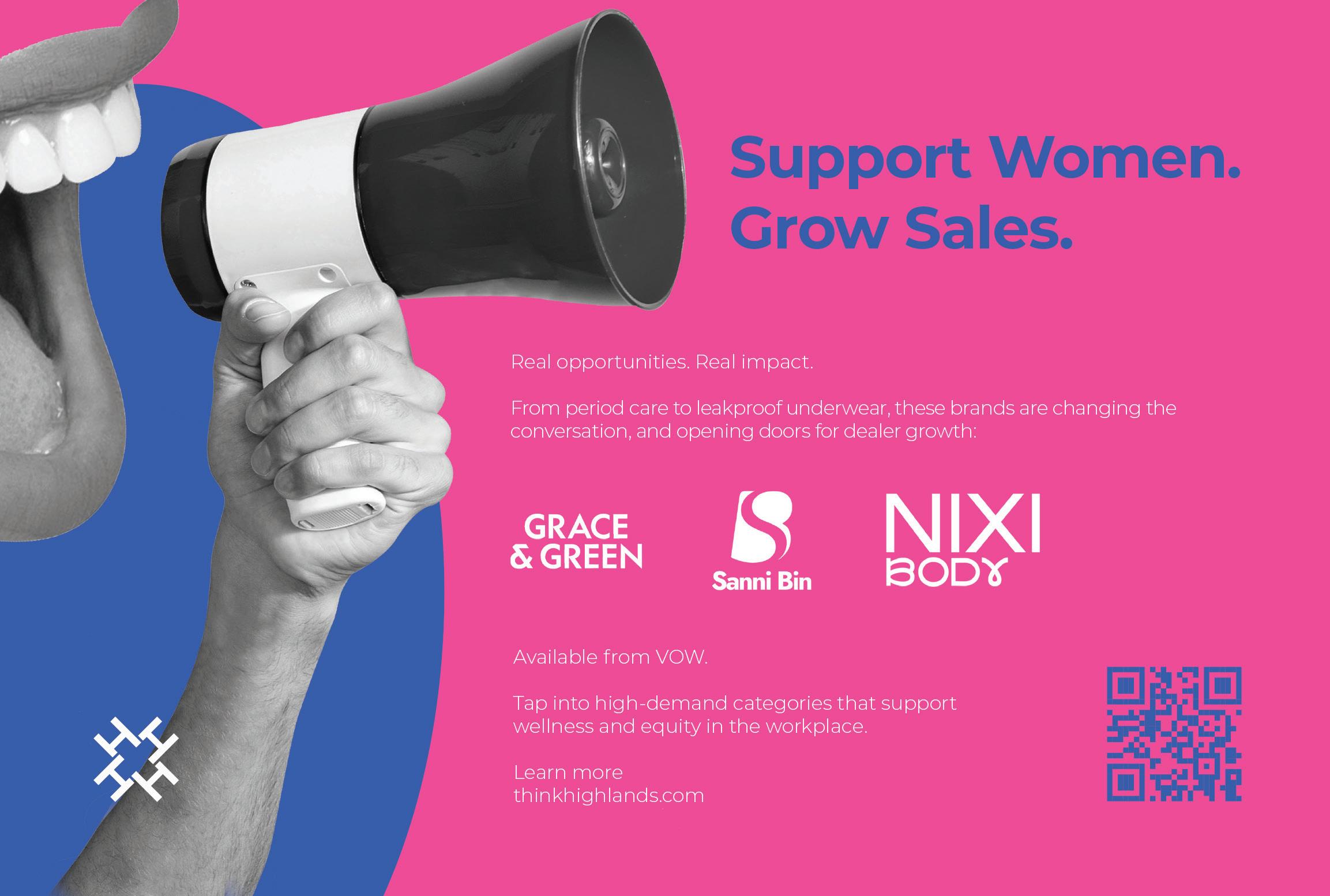
When Purple Panda launched in 2019, it wasn’t just another dealer entering the Irish market; it was the strategic outcome of two businesses joining forces. Gavin Kelly – who had founded workplace products dealer Purple Hippo two years earlier, after leaving Viking –merged his start-up with the OP supplies arm of Bryan S Ryan, a long-established local name in print and MPS.


The foundations of Purple Panda lie firmly in Kelly’s determination to create a brand that would cut through the noise: “I wanted something that was going to stand out,” he explains. Inspired by the likes of moonpig.com, he knew a distinctive name would spark curiosity and linger in customers’ minds.
Purple Hippo was simple to spell, memorable and easy to spot in an inbox or on Google. The choice of purple was deliberate, breaking away from rivals’ colour palettes. Kelly notes that purple appeals to both men and women, and a high proportion of buyers have turned out to be female.
The quirky name opened doors, transforming cold calls into meaningful conversations, with prospects intrigued rather than dismissive. And when it came time
c. €9 million CURRENT SALES
to merge with Bryan S Ryan, Kelly was keen to retain that sense of fun and freshness. After hours with a marketing agency, inspiration struck in the final minutes of a long day: Panda.
“We literally moved from a purple hippo to a purple panda,” laughs Kelly. Customers made the transition easily, though those used to Bryan S Ryan’s more corporate identity were initially taken aback. The move, however, has proved its worth.
In just six years, Purple Panda has scaled close to the €9 million mark – an impressive trajectory given the challenges of COVID, Brexit, global conflicts and even shipping blockages. From the outset, the business drew on experience and clear direction. Kelly had already cut his teeth at Viking, giving him a sharp sense of what worked – and what didn’t. He took the best elements of his corporate background – structure, analytics and customer service expectations – and brought them into a more agile, energetic environment.
A talented team of 23 now helps steer Purple Panda. The company operates predominantly on a drop-ship model, with more than 80,000 SKUs spanning furniture, technology, facilities, stationery, signage and catering. A small warehouse supports next-day delivery on high-volume items, while efficiency is driven by lean operations, real-time availability and automated postorder communication.
Crucially, the dealer is now focused on sustainable growth, prioritising stability over churn and price-driven leads. “We’re now getting the right type of customer –those not purely based on price – and they’re the ones that we want because they’re more stable,” says Kelly. Technology underpins Purple Panda’s strategy. Every stage of the customer journey – from first click to delivery – is analysed, tracked and personalised. The dealer uses AI tools, including ChatGPT, alongside its own in-house platforms to validate orders, flag errors before they become problems and even suggest faster product alternatives to keep next-day delivery on track.
This commitment to problem-solving has sparked a string of innovations: branded delivery tracking featuring a panda in a van, phone routing systems that automatically connect clients with their account manager and a customer scoring tool that highlights satisfaction levels in real time. Kelly reveals that when the team does encounter a problem, they always aim to find a solution rather than simply accepting it.
Purple Panda runs on ECI’s EvolutionX e-commerce platform, with its in-house e-commerce team continuously optimising layouts, filters, cross-sells and navigation. All agents are in-house and, over the past 12 months, operations have been structured around three pillars: reactivation, retention and acquisition.
This development work has enabled the dealer to deliver what Kelly calls “hyper-personalised” service: “If you don’t want us to call you, we won’t call you. If you don’t want us to email, we won’t.
“However, we’ll step in at the right moment if we notice a change in behaviour. We want each customer to have a unique experience.”
At Purple Panda, customer data isn’t just collected – it’s connected, processed and acted upon, all within a single platform. Automated workflows and AI-powered tools such as call summaries, scheduled callbacks and personalised outreach allow agents to focus on direct customer engagement rather than administrative tasks.
We’re now getting the right type of customer – those not purely based on price
These insights feed straight into customer communications. Emails and calls are triggered by behaviour, ensuring timely engagement without overloading prospects. “AI takes the call and will summarise it. If a callback is mentioned, it will schedule it automatically, so the agent can concentrate on the conversation. It isn’t taking a job away – it’s making it easier. It’s like having an extra set of eyes across all customer touchpoints,” adds Kelly.
The dealer serves every type of customer – from one-person businesses to multisite organisations with hundreds of locations, spanning SMEs, charities, education and retail groups.
Yet Purple Panda has a clear target: customers spending at least €3,000 a year. Every lead is assessed and prioritised using data-driven forecasts, taking into account factors such as staff numbers and office footprint. It is for this reason that Kelly believes

Purple Panda can match – and even surpass – larger competitors in growth and levels of profitability in the next 12-18 months: “It’s how we box clever compared to others. It’s always about the data and being as efficient as possible.”
Today, roughly 75% of sales occur online, reflecting a customer base that is comfortable with self-service. Account management remains a premium offering for key clients, accounting for around 5-10% of day-to-day interactions. “We want to control the narrative and make it easy for customers to transact themselves, while ensuring that every call has a clear objective,” Kelly says.
Interestingly, catalogues continue to play a significant role in the company’s marketing strategy. These printed or digital catalogues are not only a reference tool but also a proactive sales instrument, with new editions automatically added to an order. This way, the dealer can identify customers that haven’t placed an order within a specific timeframe and follow up accordingly.
Purple Panda has also branched into office fit-outs and interiors, a strategic move launched two years ago to complement its core office supplies business. “Our interiors side could be bigger than our main business in a couple of years if it keeps growing,” predicts Kelly.
The company offers a full-service solution, covering everything from furniture, flooring, painting and ceilings to electrics, air conditioning and plants. Projects are tailored to client needs, from functional modern offices to bespoke, design-led environments.
With a healthy pipeline and around 15 new leads per month, the interiors arm is thriving. “We can cherrypick the jobs we want, ensuring quality and maintaining our brand reputation,” notes Kelly.
The interiors business places strong emphasis on showcasing its work. The recently redesigned site demonstrates completed projects with videos, images and case studies, allowing potential clients to visualise outcomes. Augmented reality tools even let customers see furniture and layouts in their own locations, making decision-making interactive and precise. This redesign is being rolled out across the Purple Panda website, creating more ‘storefronts’ and incorporating additional product details, videos and images.
Much like most dealers, the continually contracting OP market has pushed the team to explore other categories. Alongside the interiors business, Purple Panda is seeing accelerated demand in facilities and catering – from hygiene essentials and jan/san products to coffee, snacks and disposable tableware – with this
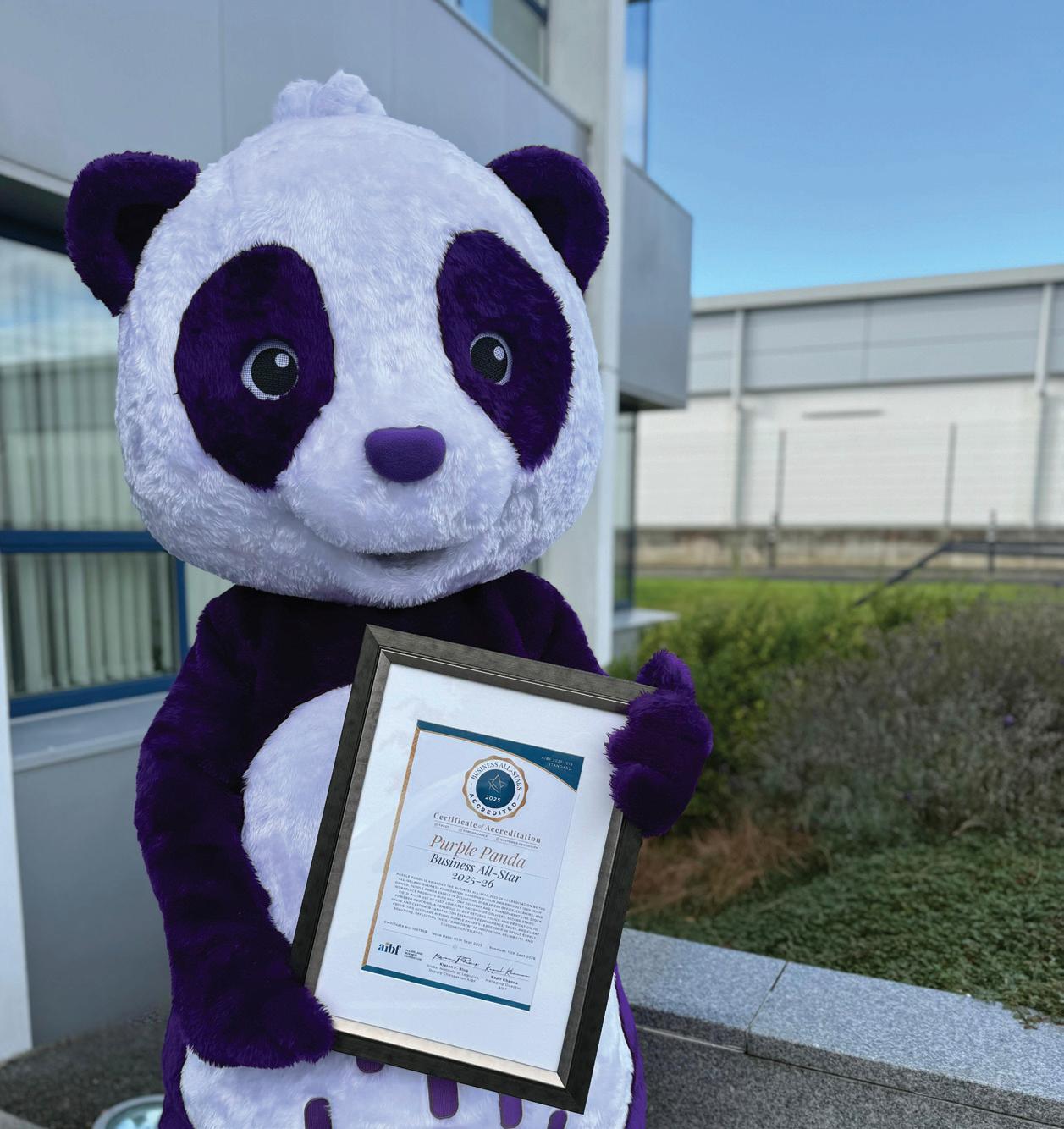
category now accounting for a substantial portion of monthly revenue.
Acquisitions are also firmly on the agenda, though Kelly is taking a pragmatic approach. Potential targets must already have an online presence aligned with the company’s systems to ensure efficiency. The dealer is also considering adding service-based businesses – cleaning, hospitality or niche technology providers, for example – that can be easily integrated into Purple Panda’s data-driven processes. “It could be a business completely leftfield and in any sector,” Kelly says.
It’s always about the data and being as efficient as possible
Looking beyond Ireland, Purple Panda is now preparing to expand into the UK. The strategy is deliberate: rather than managing the market remotely, the company plans to establish a local team to deliver a genuine, on-the-ground presence. Initially targeting specific cities, the expansion aims to replicate the Irish model, with competitive pricing and efficient service supported by experienced staff.
“It’s about being seen as a local company in the UK, employing local people and genuinely going after the business there,” explains Kelly. The launch is planned for early 2026, serving as a test bed to refine processes, assess market potential and replicate the efficiency and impact of the Irish operation.
PERCENTAGE

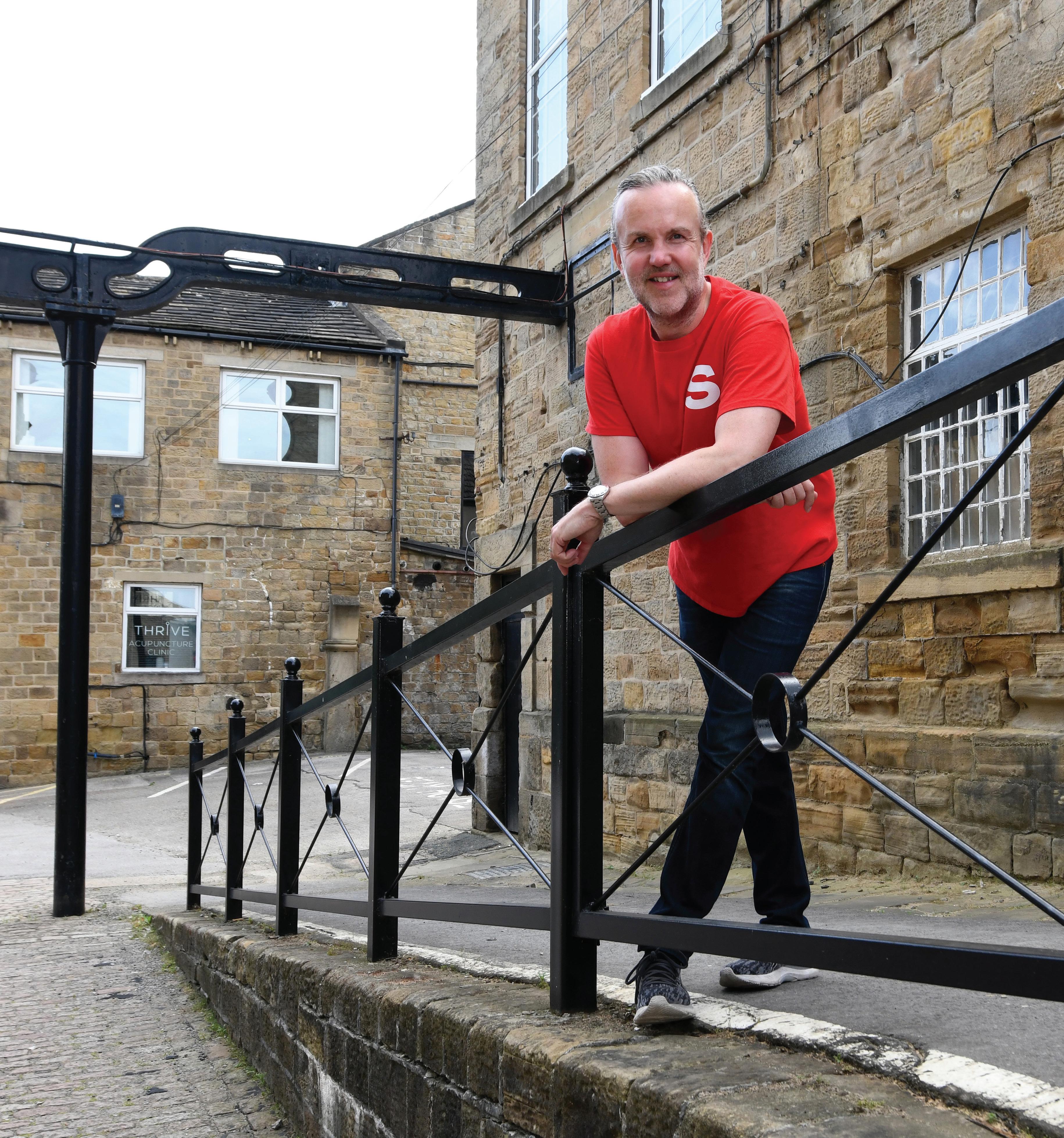
Alex Dunn, Managing Director of Superstat, sat down with Steve Hilleard, CEO of Workplace360, to explore three decades of dealer-first thinking, the evolution of the business and the practical strategies that have kept the dealer group relevant and trusted in an ever-shifting market
Workplace360: Can you walk us through from your first role at Superstat to leading the business today?
Alex Dunn: I first joined Superstat in 1994 on a summer job after returning from university abroad, completely skint. My father had founded the business with Chris Collinson, whom I already knew, and I went in as his office junior. I loved it – especially organising Superstat’s first little conference in the marketing suite at Spicers.
After finishing my degree, I returned to organise the next year’s conference and on my second day back, Chris asked if I wanted a proper job and I said yes. That was the interview process and I’ve been here ever since.
For 20 years, I worked alongside Chris as he grew the business into a genuine success story, with my father, Ivan, supporting behind the scenes as Chairman. Chris retired in 2016 and now we are a board of three directors – Karly Haley, Richard Lockley and me.
W360: What is the current ownership structure?
AD: Superstat is privately owned. I hold the majority of shares in conjunction with Karly and Richard. Karly has held her shares for as long as I’ve held mine and Richard’s stake is in the process of being finalised.
W360: Thinking back to 1994, when you were in the office making tea, how has the group evolved over the past three decades?
AD: The group grew out of a local OP wholesaling business run by Chris and my father. They noticed that when dealers joined buying groups, a lot of their spend just vanished. To cut a long story short, they started engaging with those buying groups, attending their exhibitions and it worked well.
At the time, most large groups focused on bigger dealers, leaving a gap to support the smaller end of the market. Superstat began by targeting relatively small dealers, but within just a year or two, we had more than 100 members, some turning over millions.
The essence of what we do remains unchanged: bringing dealers and suppliers together to grow the business, putting the dealer first, supporting their growth and encouraging them to use our initiatives and work with our suppliers. Those principles have endured for 30 years.
What has changed over the years is that we no longer try to do too much, but when we decide to do something, we really do it properly.
W360: How many dealers are currently on board?
AD: Over 200.
W360: Is that moving in any particular direction?
AD: No, it’s bizarrely holding very steady. There is some consolidation, as you know, but we signed a new dealer just last week.
W360: You mentioned that the group’s original objectives have remained consistent over the past 30 years. What are the main focus areas today when engaging with dealers?
AD: The big one is sustainability. We’ve just launched our eco offering and that’s attracting a lot of attention.
Much of our focus is on new product areas, introducing new suppliers and [...] marketing and sales training
W360: Is it in addition to a standard programme or something you’re just rolling out?
AD: We’ve been rolling it out slowly and presented it at the conference with some of the dealers that are piloting it with us.
Dealers are telling us they feel there is a lot of talk going on around this issue within the industry, but that they need something tangible to show their customers right now. They also want to work towards being greener and genuinely making a difference, but you can’t change your whole business overnight.
Our solution provides a recognised standard without demanding an onerous amount of time or money to chuck at it straightaway.
W360: Any other strategic priorities?
AD: Much of our focus is on new product areas, introducing new suppliers and providing support with marketing and sales training in those categories.
W360: What would you say is the rate of decline in consumption of what we’d call traditional OP?
AD: Between 5-10%, although some categories are seeing double-digit declines.
W360: Are your dealers managing to fill that gap and if so, which adjacent categories are proving popular within the Superstat universe?
AD: Overall, they’ve plugged those gaps – and some have done fantastically well. A few haven’t, but on the whole, topline sales have remained steady. Dealers are constantly adapting and heading off in different directions. Furniture is a major growth area and some have really pushed into workwear and PPE, as well as catering and hygiene. Print remains a strong seller for certain dealers and at our recent conference, I spoke to a couple having great success in AV.
W360: What were some of the highlights from your recent conference? How was the mood and what were you hoping to convey?
AD: First and foremost, it was just an absolute joy –the mood was extremely positive, attendance was excellent and feedback from both dealers and suppliers was fantastic. We had a brilliant speaker who inspired everyone, but the most impactful sessions were when dealers themselves were at the centre of discussions. Peer-to-peer learning is far more powerful than anything I or a supplier could present.
Of course, not everyone attended. Some dealers are very hands-on, so even a single driver being unavailable can mean the managing director has to step in. Others might have preconceptions about these kinds of events – worrying about what to wear or not knowing anyone. But once they attend, they see how welcoming and enjoyable it is, and how valuable it is to take time out to think about their business.
The main objective is to provide a friendly environment where dealers and suppliers can come together and spend a day thinking, learning and sharing experiences and inspiration. Dealers that attend really hand-picked themselves and were focused on growing their business, exploring new product areas and making the most of the support on offer.
Our approach is very much a menu and we don’t dictate anything to anyone
W360: The industry is at a bit of a tipping point and needs to show a collective movement towards new opportunities. If vendors are relatively new to our sector, you want them to see an engaged reseller base. AD: I don’t disagree. We had a number of suppliers in what we call new product areas. They’re not new to most dealers, but I keep an eye on whether they’re getting value from the event and what the engagement has been like for them – because for some, it isn’t an obvious fit. Some are ex-OP, so they know the trade; but for others, it’s a whole new world.
I’d say all the suppliers, vendors and exhibitors were blown away by the level of engagement because for them it’s a high-quality audience of owners and decision-makers in the room who are all genuinely there to seek out new opportunities to grow their business.
W360: Talking about engagement, can you walk us through some of the services the group offers? Is it one size fits all?
AD: Our approach is very much a menu and we don’t dictate anything to anyone. Most dealers tell us they need help with something. Some members might only use one initiative that’s useful to them and that’s fine. Even if only 50 out of 200 use a particular service, that counts as a success. We take the time to find out what that thing is. It could be our sustainability programme, sales training or even our catalogue.
W360: I take it that’s not a full line catalogue?
AD: No, it’s a short-range in an A5 format with a good, better and best selection, offered either street-priced or unpriced. About 50 dealers still use it, roughly split 50:50 between the two pricing options.
W360: I suppose Amazon drives a lot of pricing. Does it come up in conversation much with dealers?
AD: Amazon is definitely taking business from our dealers, although it’s hard to quantify. We’ve tested

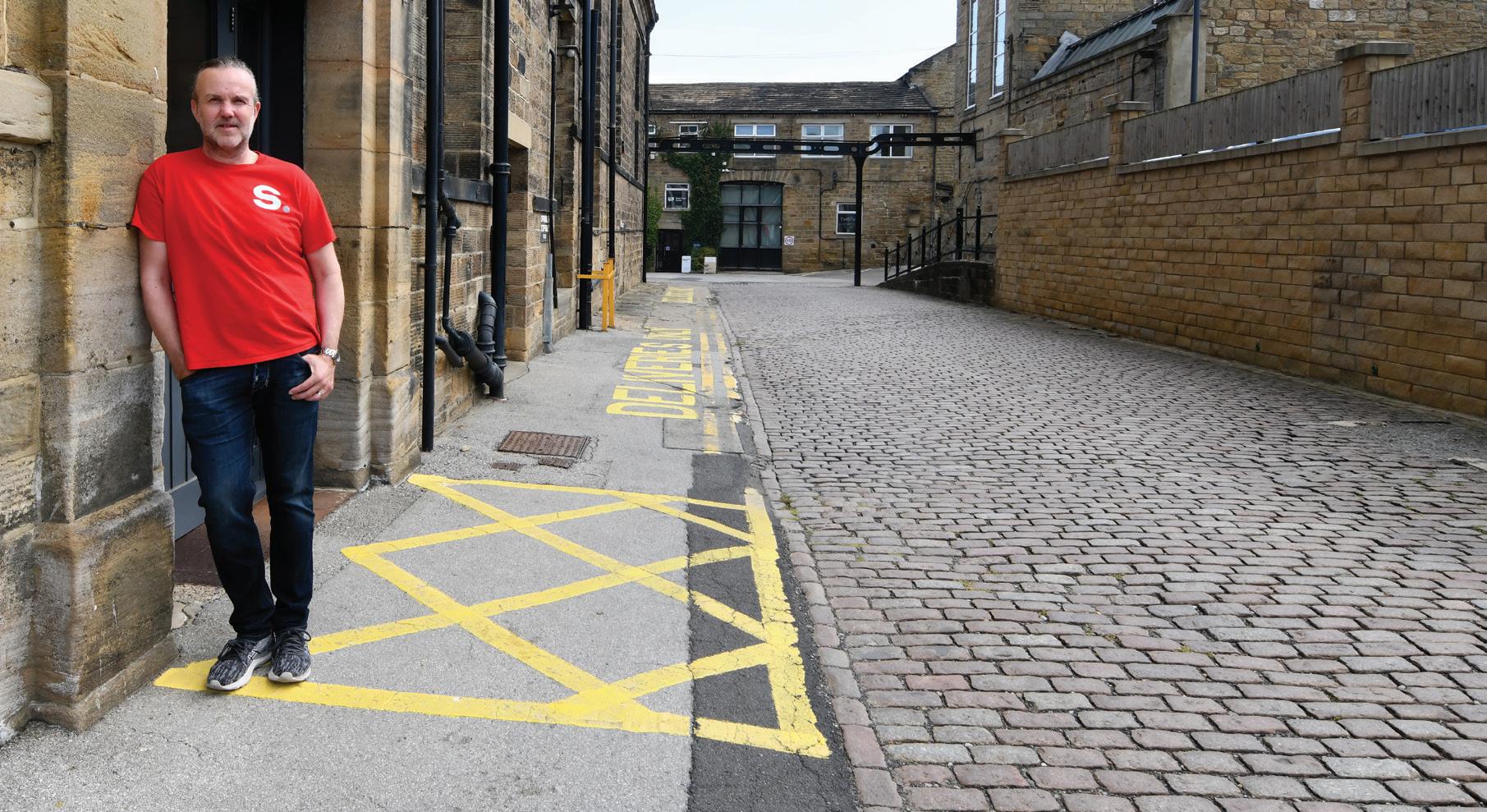

buying office stationery from Amazon and the pricing and service vary wildly when orders are fulfilled by different vendors. So independent dealers have plenty in their armoury to compete with Amazon when it comes to service.
W360: Amazon Business has been very much focused on FTSE 250 companies and other large public procurement organisations. Are you concerned it might move further down the funnel into SMEs, which are presumably the heartland of your dealers’ trade?
AD: I’m sure Amazon is already eating into that segment significantly and it will only continue to do so. It’s hard to know exactly what is happening.
However, my take is that if Amazon Business is focusing on the top end of the market while also cleaning up at the bottom, supplying microbusinesses and individuals, there’s still a middle ground of SMEs in the 20-50 office worker bracket where independent dealers traditionally have a lot to offer.
W360: Your compatriots at Nemo Office Club run a ‘buy local’ campaign. Do you think there’s scope for a wider industry initiative?
AD: Yes, I don’t see why not – we’d certainly support something like that.
W360: Returning to online, what’s your view on the digital capabilities of your members?
AD: They all have e-commerce platforms – many have had them for some time. But, as with all SME businesses, there’s a wide spectrum of digital marketing expertise.
Some are naturally brilliant at social media, while others tell us they struggle to find the time when there are other things they could be doing that give a more measurable result. Being hands-on, owner-managed businesses, even something such as sending a weekly email to existing customers can be a challenge to maintain consistently.
W360: Presumably you offer a service that tailors this or manages it for them?
AD: Yes – we provide a ‘done-for-you’ service, tailored to how much the dealer wants it personalised to their business. Social media posts and email marketing are sent out come rain or shine, with consistent timing and branding. There are clear economies of scale, so it can be delivered very cost-effectively.
Some business owners are hesitant to get involved in social media marketing because they don’t know where to start. With a platform and a track record of posts being shared for them, they can contribute more
easily. If they’ve got news or something personal to share, they’re not going in cold and risking a post that might look out of place.
W360: How many of your dealers take up that service?
AD: Funnily enough, about 50.
W360: And the rest?
AD: A very small percentage handle it themselves, and at a really high level, but many dealers tell us they struggle for consistency – whether it’s sending out a regular email or posting on social media. They’re always busy and it’s often a job that gets pushed to the bottom of the pile.
W360: How are these businesses staying afloat? If they’re not communicating with customers, somebody else will be.
AD: I agree that the bigger companies especially are relentless in their marketing and smaller independents are not always as consistent. But some tell us they look at what gets churned out and think they’d rather not do anything at all than put something out that doesn’t represent their personality. It’s something that we can help with: we want to give dealers ‘big company’ consistency in their marketing communications, but at the same time, you’ve got to preserve the individual identity of each dealer.
W360: Are there any standout success stories across your dealer network that you highlight to prospective members considering joining or switching allegiances?
AD: Absolutely. The most inspirational stories are where a dealer has focused on a new market or product area and really gone all in. Without naming names, the successful ones are investing to some extent in time, stock or expertise and taking it very seriously – and getting very good at it.
W360: For a dealer that decides to focus heavily on a new product area, what value does Superstat offer?
AD: In any new product area, we often help by connecting dealers with relevant suppliers – those with quality products, strong service and the right profile within the supply chain. Dealers could research this themselves, but having relationships already in place, with deals and terms set up, can be a real shortcut.
We also provide marketing support, which over the past two years has focused on different product areas. We can help dealers market these areas effectively.
Specialist sales training is another key area. A lot of sales training can be very product focused and forget to teach people how to sell.
Our priority is first to provide a sales process – a technique and approach for being more successful – and then tailor it to a new product area. It’s about combining a solid sales process with targeted product knowledge.
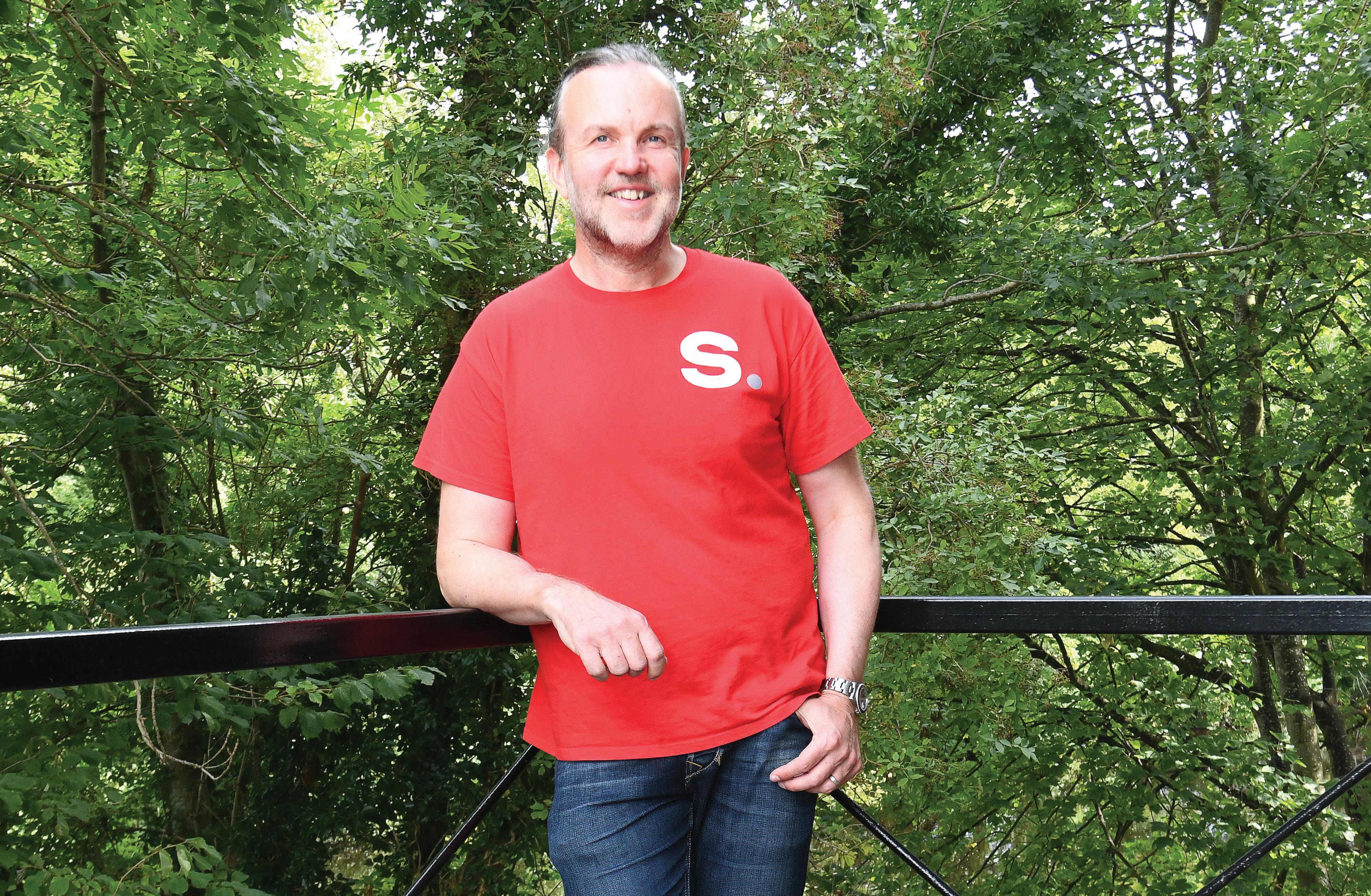

W360: Who at Superstat is tasked with becoming a guru in these adjacent product categories?
AD: It’s very much a team effort. Whoever manages a particular supplier relationship will drive that side, with our sales training expert researching the area, working with the supplier and bringing the training up to our Sales Academy standard. Product knowledge is important, but getting the sales process right is the key. Giving people too much detail on a product can almost be a bad thing.
W360: I guess content is pretty key to expanding the dealer community into different product categories and opportunities.
AD: Totally. It’s an area we’re immensely proud of. We create our content in-house, designed to engage consumers in a way that grabs attention without being overly salesy. We don’t lead with products or special offers. Offers have their place and may feature further down a communication, or not at all; but we lead with original content created weekly, tailored as much as needed to a dealer’s business.
We have an in-house style and see very low unsubscribes, with open rates well above the industry standard. Part of that comes from having good data – it comes directly from the dealers. These are actual customers and prospects, not purchased lists. For example, we send out 35,000 emails a week to real people who buy workplace supplies, with content we hope is genuinely worth reading, rather than saying, “Punched pockets are now just £1.99.”
W360: I get those emails as a consumer and wonder why they are still pumping out all that stuff.
AD: I’ve had that debate with a lot of people over the years. They’ll say, “Well, the promotional email I sent had more success than yours,” and it’s hard to argue – the sales spike is there in the stats. But that’s not what we’re trying to achieve. We want to enhance the relationship between the dealer and the consumer – to position them as businesses that people want to deal with and as helpful experts, perhaps in a particular area.
W360: No one’s going to get rich driving the price down on punched pockets.
AD: No, but that’s the kind of thing some focus on.
W360: Let’s talk about some of your supplier connections. Obviously, you’ve got a quite tight one with Exertis Supplies.
AD: We’d known the late Tim Holmes for decades, going back to his time at ACCO Brands. We stayed in touch while he was at Lyreco and then as he moved to Exertis Supplies. Quite frankly, when Spicers went under, we had a conversation with Tim. We’d been looking to

do something, but we had a solus arrangement with Spicers which I didn’t feel we could just breach or walk away from.
W360: Does Exertis’s no-frills model inhibit dealers to some extent or is it just a fact of life that they’re using multiple wholesalers now, given the expansion into adjacent categories?
AD: I don’t think it limits them. Over-duplicating traditional OP isn’t the right approach – especially when there are another 60,000 SKUs they could be selling, depending on which tangent they pursue. Dealers decide where to buy and many of our members use VOW as their main supplier.
W360: So, Exertis recently got a new managing director and new owners. Does that give you any sleepless nights?
AD: I’ll be honest – it was a bit of a shock. While both changes are perfectly understandable, having them happen simultaneously raised an eyebrow. That said, wholesalers have traditionally changed hands over the decades and that’s rarely sinister unless there’s something fundamentally wrong with the organisation – which, of course, has happened in the past.
We really liked Andrew Beaumont as the previous Managing Director and had a great rapport with him, but we also really like his replacement, Matt [Balcombe]. He seems like a great guy and definitely brings a certain energy to the role.
W360: How would you like to see Exertis evolve under the new Aurelius ownership?
AD: The new premises at Elland give Exertis the opportunity to get more involved in what we call newer product areas and dealers are very receptive to that. There’s now room to move, improve service and add extras – such as pick-and-wrap – which our members
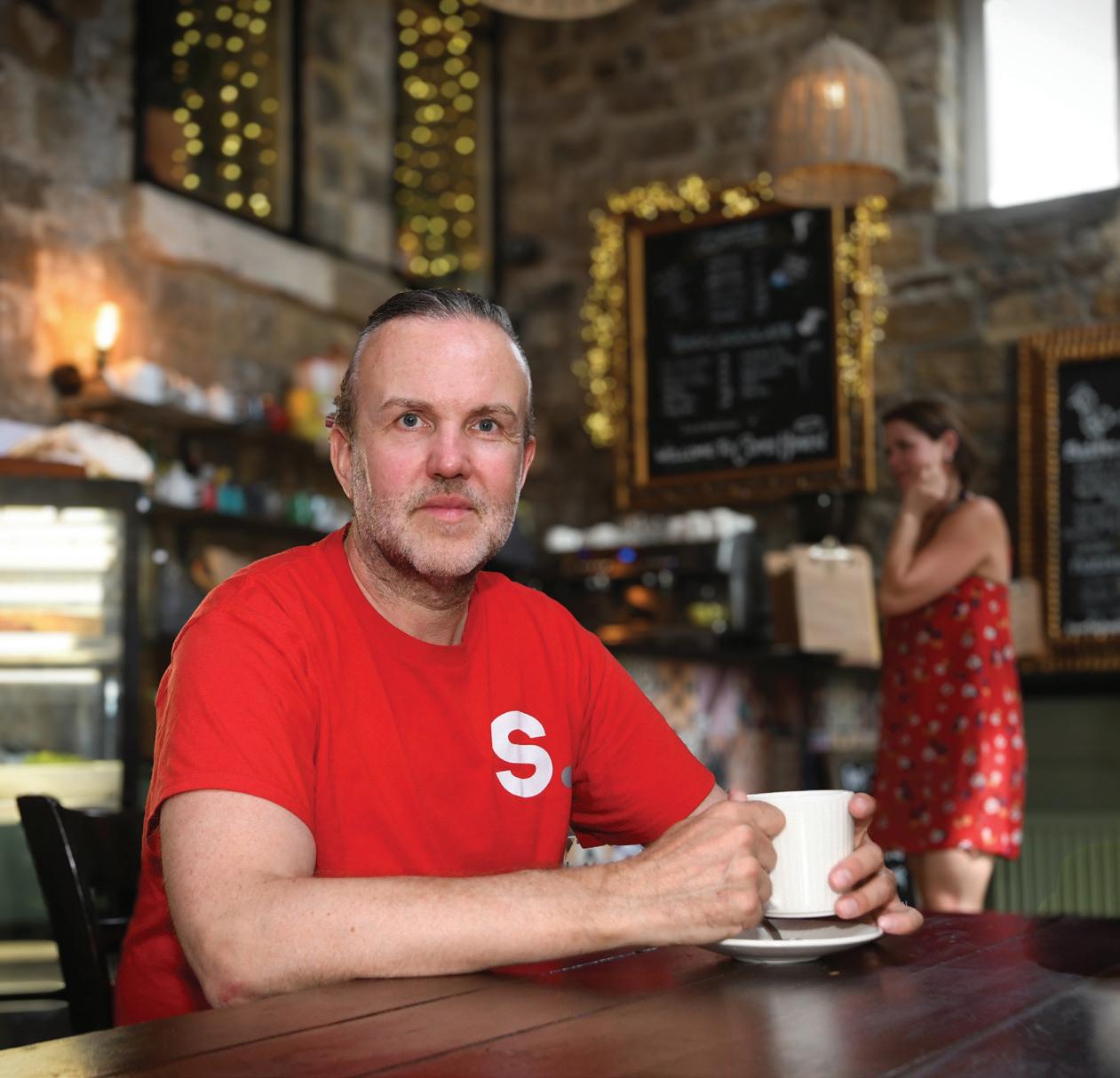
Dealers have never relied on the exclusivity of their products […] it’s not how they distinguish themselves
have come to expect. One thing I would say about Exertis is that when it commits to something, it really does it properly – under-promising and over-delivering.
W360: What’s your view – and that of your dealer members – on the size of evo Group and, more importantly, its diversified channel model?
AD: Some dealers object to buying from a competitor or competing with their supplier – however you want to frame it. Others take a more pragmatic approach, focusing on the supply proposition in front of them at that moment.
W360: While we’re on the topic, there’s also the move from vendors to D2C – whether through branded stores on Amazon or their own e-commerce sites. Are your dealer customers getting disillusioned by that?
AD: I think it’s just part of what the internet brings and there’s not a lot you can do about it. Dealers have never relied on the exclusivity of their products – it’s always been a commoditised range – and it’s not how they distinguish themselves.
W360: What are your thoughts on collaboration between dealer groups?
AD: We have good relationships with our competitors and work with them in certain areas, particularly where
collaboration benefits both dealers and suppliers. It’s a bit like a dealer group on a grander scale and we’re up for that where it makes sense.
I do quite like the element of competition, though, and having more dealer groups adds differentiation in the market.
W360: What’s your view on the Office Friendly and Integra merger for the industry as a whole?
AD: Honestly, what I think is not important. If their members feel it’s a good idea and benefit from it, then good luck to them. As I said, I quite like having other groups around.
W360: Do you think we’re going to see more consolidation, now that two of the five dealer groups have joined forces?
AD: There will be more, whether that’s at the dealer, dealer group or wholesaler level. But dealers are agile and well placed to make micro changes on a daily basis. They have a track record of succeeding despite macroeconomic trends and headwinds that aren’t in their favour.
So yes, there will be change and consolidation, but our membership is resilient. They’ve proven time and again that it’s not wise to write them off, as many people have over the time I’ve been doing this.
W360: What about BPGI? We don’t hear much about it anymore – is it still relevant and important?
AD: It’s still relevant to us as it’s a bit like a buying group model but on a larger scale. While there’s a clear benefit for our members, we’ll certainly continue to support it. It’s also been a way for me to get to know other people doing the same job, whether in the UK or abroad. I hesitate to call it networking, but it’s about having those conversations with peers.
W360: Sticking with consolidation, I guess it’s inevitable that some dealers in your group, given their age profile, are starting to consider their exit. What role does Superstat play as a dealer owner nears retirement?
AD: We’ve been helping dealers with acquisitions for 30 years and have probably seen anywhere from 50 to 100 go through. Generally, our dealer owners are quite youthful, so they’re more likely to be acquisitive than looking to sell. But it’s not always about age or retirement – I was talking to a dealer recently who’s looking to emigrate and start afresh abroad and ultimately wants to sell the business.
It’s invariably a win-win situation. The selling dealer realises value for the heart and soul they’ve put into the business; while it’s an excellent growth opportunity for the buyer, who might bolt on £500,000 or £1 million worth of sales – the equivalent of gaining a large number of new customers.
W360: Thinking about the future, what are the main challenges facing the independent dealer channel?
AD: Some of this we’ve already touched on, such as the decline in traditional OP, but also a flat economy and certainly people’s working habits. That decline in volume has been ongoing for years, although it’s probably been masked to some extent by price inflation, with turnover maintained artificially to some extent.
The government is busy working to reduce the rate of inflation, so my concern would be a combination of an ongoing reduction in volumes, coupled with price deflation. That could really hit turnover and cause a problem that we can’t solve quickly – another reason for us to be robust in growing new areas.
W360: Challenges aside, you came away fairly buoyed by the conference you ran. What was driving that enthusiasm?
AD: It’s hard to pinpoint exactly – perhaps just a sense of camaraderie that comes from taking time out of the day-to-day to reflect on what you’ve achieved and what you want to achieve next. Talking to like-minded people about what works and what hasn’t, engaging with suppliers who are there to grow their business and help you with yours – and, of course, having a bit of fun along the way.
There was a real energy in the room that reinvigorates your belief in this industry and the
dealer channel we operate in. You look around and think, “Actually, this isn’t all that bad.”
W360: If it’s not all that bad, I guess you’ll be sticking around a little longer. What are the biggest lessons you’ve learned since taking the top role?
AD: I once read a quote, and to paraphrase: “As a managing director, I want to try to be of some help and not a total hindrance to the team around me.”
W360: Don’t get in the way of your team.
AD: At the end of the day, someone’s got to make the decision, but it’s important to involve everyone and let them have their say. I won’t be here forever and there are younger people coming through. I was reading about The Entertainer – the founder is retiring and handing over control of the business through an employee ownership trust. That’s something I’d love to do: create a future for members, suppliers and the internal team who operate Superstat. That would be amazing.
Another lesson I’ve learned is that the people actually doing the job are best placed to find the solutions –not the manager. Personally, I still want to take this business to another level, develop the offering to customers, scale the business and provide an exciting future for the team around me.
W360: Sounds good. Thanks, Alex.


Ross Jones, founder of RJJones Consulting ross@rjjonesconsulting.com
Ross Jones examines the growth reality you shouldn’t ignore
The OP core is not collapsing, but it is no longer the engine. For most dealers, general office products (GOP) still make up about 80% or more of sales. Yet category growth is anaemic. The UK Office Supplies Market Size & Outlook, 2024-2033 report reveals a 26% decline between 2022 and 2024, with GOP forecast to return to only around 1.6% CAGR through to 2030.
By contrast, professional cleaning supplies are expected to grow by 12-15% per year over the same period, driven by a permanently elevated focus on hygiene post-pandemic. Similarly, catering products (non-food) show solid, though more modest, growth of 3.7-6.5% CAGR through to 2035, with even the most pessimistic models forecasting an outperformance of GOP’s predicted 1.6% growth.
The conclusion is clear: to maintain an attractive top-line trajectory, cleaning and catering must be
part of your portfolio. Put simply, success will not come from convincing existing buyers to consume significantly more paper or pens. It will instead come from acquiring new customers with adjacent, growing baskets – and cleaning and catering are the most accessible and scalable categories for dealers today.
Before moving into the heady world of cleaning products, I worked in catering equipment. Towards the end of my time in that sector, I served on the senior team at the Nisbets-owned Uropa Brands. Back then, our world and the workplace supplies world barely touched. We had never heard of VOW Wholesale, Exertis Supplies or EO Group because those ecosystems did not collide.
That is not the case now. The recent tie-up between EO Group and Uropa is a testament to the convergence. When I was at Uropa, more than 1,000 dealers were actively buying catering products. I would be amazed if more than 1-2% of those overlapped with the 1,000-plus traditional OP dealers supplied by wholesalers in our channel. That gap represents a clear greenfield opportunity.
As the walls come down, a new playing field opens. Those dealers that act first to extend their reach will capture a disproportionate share. Win the historically retail- or Amazon-focused buyers with cleaning and catering, then layer on the category you already know best: GOP.
Cleaning and catering are the most accessible and scalable categories for dealers today
I won’t go into too much detail here on entering these categories – perhaps I can convince the Workplace360 team to give me another slot for that! – but it’s as simple, and as complex, as defining a core range, developing a proposition within your business and aligning your sales and marketing activities behind it.
For now, here are some basics so you don’t have to learn the hard way. Three pitfalls to avoid:
1. Treating cleaning like another paper line. It is outcome led, not just price led.
2. Launching too wide. Depth in the right SKUs beats breadth you cannot support.
3. Overlooking the ‘install’ value on catering products. Coffee and sundries follow a similar sales cycle to cleaning. However, the wider basket of catering items (tableware, tea/coffee-making equipment, etc) offers the potential for a large ‘install’ value that could equal a year’s worth of cleaning products, or more.

The previous issue of Workplace360 included reaction to the news that Exertis IT – and therefore the Exertis Supplies office supplies wholesaling business – was being sold to private equity firm Aurelius in a deal worth around £100 million. With the transaction expected to close on 31 October, Exertis’ management team is bound by regulatory conditions about what it can and cannot say. However, in late September, there was widespread speculation in workplace supplies circles that the business had seen its credit insurance lifted – leading to rumours of a possible cash flow crisis.
Recognising the need for proactive communication to the market in a sector where news travels fast, Exertis Supplies Managing Director Matt Balcombe approved a press release. In that document, he admitted there had been credit insurance issues, but these had only affected a “small number” of suppliers.
During a follow-up interview with Workplace360 a few days later, Balcombe sought to put these comments into a clearer context. “What we’ve experienced is specific credit insurers reducing or withholding insurance
to some of our vendor partners, while they complete their own reviews,” he explained.
“This is entirely normal during a change of ownership and we are working on solutions with our partners to ensure minimum disruption to the essential services we provide to our customers. We’re talking about a single-digit number of vendors.
“It’s a very small proportion of our supplier base and so far, we’ve found ways to continue trading without interruption,” he confirmed.
We are working on solutions with our partners to ensure minimum disruption
He added: “What’s been really encouraging is how flexible and pragmatic our partners have been. They understand it’s part of the process and value the longterm relationship. Deliveries are coming in every day and orders are being fulfilled as usual.”
Exertis Supplies Managing Director Matt Balcombe quashes rumours the wholesaler is under threat from credit insurance withdrawals. By Andy
Braithwaite

While the sale to Aurelius has dominated recent headlines, Balcombe has spent his first few months in charge quietly overseeing an extensive internal transformation that began under the leadership of his predecessor, Andrew Beaumont. Exertis Supplies, he noted, is well into the first phase of a three-year growth plan that focuses on areas such as customer alignment and operational efficiency.
A major component has been the reorganisation of the sales and commercial functions. The company has divided its customer base into three main groups, each paired with sales representatives best suited to clients’ preferred way of working.
“Some customers want a highly data-driven relationship – price feeds, stock updates and back-order visibility,” said Balcombe. “Others prefer more hands-on conversations about tenders or category advice. Every customer now has a named account manager, which I believe is unusual in the market.”
Supporting that new model are four Centres of Excellence covering commercial management, purchasing, pricing, and data and marketing – overseen by Ben Appleby. Two of these (pricing, and data and marketing) are newly created and have led to the addition of six specialist roles.
“The goal,” explained Balcombe, “is to bring real expertise to how we use data, set up products and manage pricing, freeing up the commercial team to spend more time with vendors and customers.”
We want to be visible, approachable and part of the conversation
Operationally, Exertis Supplies is maximising its connection with the broader Exertis IT distribution network, particularly through the 33,000-location automated pick tower at Burnley Bridge in Lancashire.
“This facility allows us to handle ink and toner more efficiently and frees up 4,000 pick locations at Elland for traditional OP,” said Balcombe, adding: “The two sites complement each other well and give us 24/7 capability when we need it.”
The move to Elland – a 130,000 sq ft facility completed in early 2024 – has also improved flexibility and space utilisation. “It’s given us room to expand the range and to host customers in a modern environment. We’ve had a lot of people through the site in recent months,” he noted.
Another development has been a move into Ireland. The company opened a warehouse and sales operation in Dublin earlier this year, initially with around 6,500 SKUs and a small local team serving both the Republic and Northern Ireland.
“We’d traded into Ireland from the UK for years, but post-Brexit that became more complicated and

expensive. Having stock on the ground gives customers a faster and more cost-effective option,” said Balcombe. A partner event is planned in Dublin for February 2026 to showcase suppliers to the Irish market.
Across the UK and Ireland, Balcombe has spent much of his first few months on the road. “I’ve met around 200 customers and vendors since March,” he said. “Those conversations are invaluable – they tell us what we’re doing right and where we can do better.”
The company’s emphasis on collaboration has also led to service innovations. One recent project involved a dealer focused on sustainability goals. “We now consolidate their orders and deliver direct to the end customer using a white-glove carrier service,” Balcombe explained.
He added: “Goods go to the right floor, packaging is removed and everything arrives ready for use. It reduces transport miles and helps the reseller provide a premium experience.”
Exertis Supplies is likewise stepping up engagement with dealer software partners such as Prima Software and ECI Software Solutions, supporting joint events and user meetings. “It’s still a face-to-face industry,” said Balcombe. “We want to be visible, approachable and part of the conversation.”
Balcombe’s focus through the transition period is on execution and stability. “We’re delivering the changes we’ve committed to and continuing to invest,” he said. “Customers can expect the same service, the same people and the same reliability.”
With the sale to Aurelius imminent, the Managing Director remains outward-looking. A series of customer initiatives are planned, including the company’s first ‘12 Days of Christmas’ event at Elland and a programme of regional visits into 2026.
He concluded: “The message we’re giving to our partners is that it’s business as usual – and we’re investing for growth.”
What once involved a bitter coffee and a sugary snack has evolved into a carefully curated experience that helps staff to feel genuinely valued. By Kate Davies
On the surface, breakrooms provide employees with the chance for a well-earned pause in a busy day. Beyond that, they play a far bigger role in supporting individuals, strengthening teams and boosting company performance.
As Janinne Taylor, Head of Marketing & Product Development at Morleys Design, explains: “Modern breakrooms – whether in schools or offices – are evolving into vibrant hubs for connection, featuring quiet zones for relaxation and opportunities to step away from packed schedules.” Her colleague, Managing Director Adam Smith, adds that hybrid working is a key factor driving this shift. As a way of enticing staff back on-site, many companies are redesigning breakroom spaces to promote better work-life balance and make the office a more attractive proposition.

42% of UK workers say protein content is part of their thinking when choosing lunch Healthy Eating in the Office 2025, Just Eat
TrueStart Coffee CEO Helena Hills puts it simply: “The breakroom isn’t just about fuelling work; it’s about fuelling culture. It’s the little everyday rituals, like making a round of coffees, that knit teams together and make hybrid work feel human.”
Gensler’s Global Workplace Survey 2025 highlights the need for more people-focused spaces, revealing that only 14% favour a corporate office. Most prefer settings with a different feel, such as nature retreats (14%), coffee shops (10%) or a residential atmosphere (9%).
As a result, dealers are being asked to help design areas that are capable of promoting both collaboration and relaxation. Morleys Design reports strong demand for furniture with a resimercial aesthetic – pieces that combine the comfort of home with the durability of commercial use.
Dynamic Office Solutions has also responded to this trend, introducing a café and bistro range alongside UKmade soft seating. “These products not only enhance the look and feel of breakrooms and kitchens but also encourage staff to take meaningful breaks,” explains Managing Director Nicola Speers.
Not every client has large areas to work with, however. CEP Office Solutions Communications & Marketing Manager Marie-Amélie Dufour notes that the company has seen growing interest from businesses with limited space, particularly in their kitchens or break areas. To meet these requirements, CEP has developed compact solutions that are suited to small environments. These include streamlined equipment, storage solutions and waste bins.
“We are seeing a decline in large-format, multicompartment storage solutions,” adds Dufour. “In this context, CEP has revised its 2025 offering by removing a large-format storage station in favour of more flexible solutions that are better suited to modern spaces.”
It’s the little everyday rituals […] that knit teams together
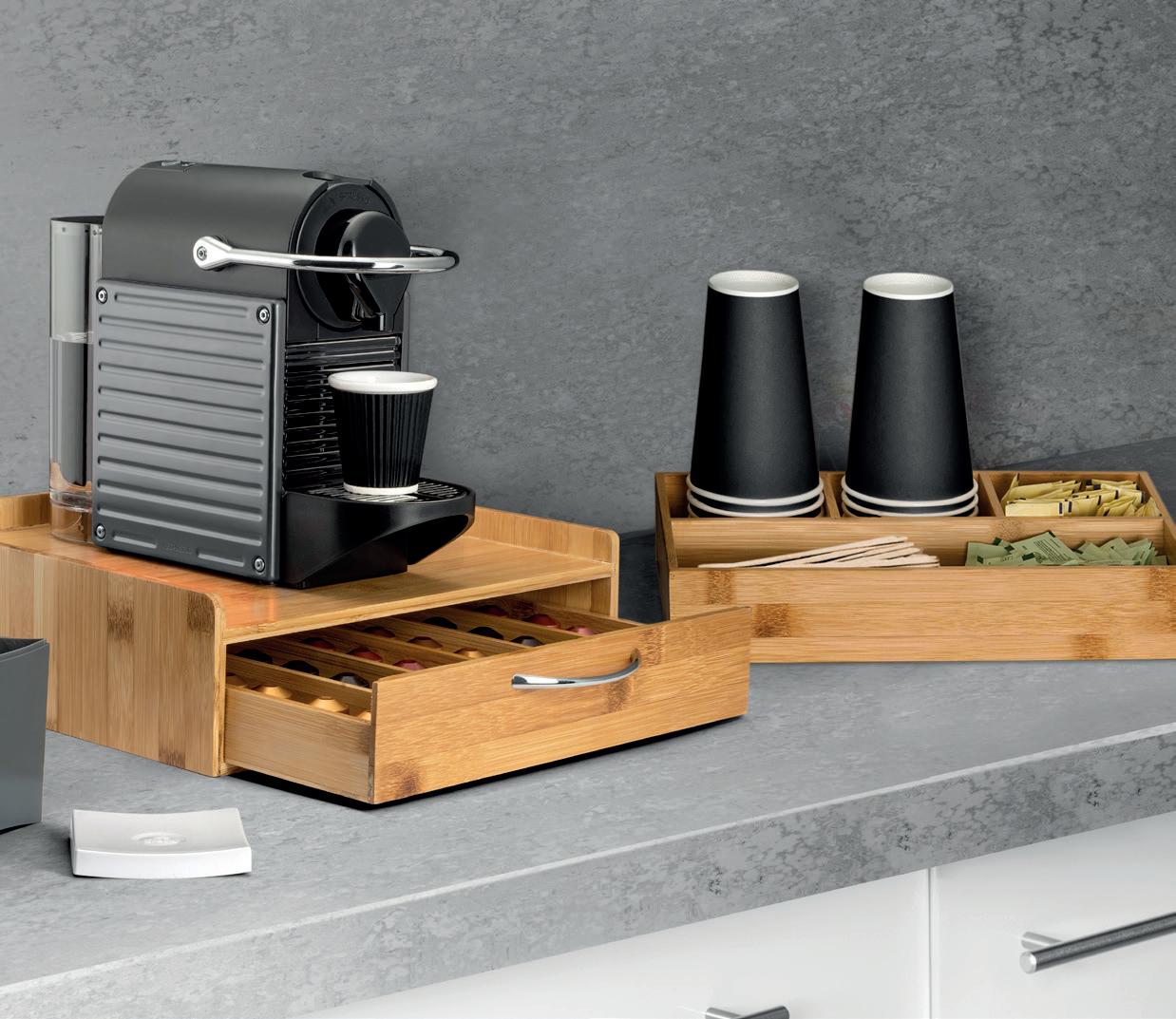

Coffee culture is central to the modern breakroom. Coffee’s Fourth Wave analysis – by global market intelligence firm Mintel – reveals that more remote workers now own specialty brewers such as single-cup and pour-over systems, signalling a wider demand for premium coffee.
Gen Z, in particular, is driving coffee’s ‘fourth wave’, valuing quality and more inclusive, uplifting experiences.
These expectations are now filtering into workplaces. “People are looking for energy, positivity and a little bit of joy from their daily brew,” Hills says, adding: “A vibrant breakroom stocked with exciting, great-tasting coffee says, ‘We care about our people,’ while a dusty jar of generic instant sends the opposite message.”
As younger employees push back against overly complicated coffee options, dealers have an opportunity to simplify choices and make purchasing easier.
TrueStart has been helping customers to navigate the sometimes-confusing world of coffee machines by working with trusted partners to supply them alongside the coffee itself, giving buyers a single point of contact for everything hot beverage-related.
This focus on meeting employee preferences extends beyond coffee, as hydration in general is also being re-evaluated. Demand is rising for low-sugar soft drinks that offer a boost without the crash. A popular option is the MOJU Shot range from MBM Omega, which has become a regular choice in offices aiming to support wellness without sacrificing taste, according to Managing Director James Morton.
Workplace snacks are also reflecting employees’ health priorities as employers respond to growing calls for more nutritious options. A 2025 Just Eat study of more than 1,000 UK workers found that 65% are more focused on health and nutrition now than five years ago, and many report that these attitudes are now spilling into their office eating habits.
Protein has become particularly important, with 42% of respondents saying that protein content is part of their thinking when choosing lunch, while 20% cite it as their main consideration. In practice, one in six workers are now being offered protein bars at work, while one in seven can pick up high-protein yoghurts.
Meanwhile, Mintel’s The Rise of Fiber research positions fibre as the next essential ingredient in healthy eating, noting that the ongoing social media trend of ‘fibermaxxing’ encourages consumers to increase their daily intake in creative and appealing ways.
Morton sees these dynamics as more than nutritional choices, viewing them as part of a wider movement in the workplace: “It’s about more than snacks; it’s about creating a sense of belonging and reinforcing company culture through small, everyday gestures.”
The dealer’s Healthier Options range, launched in 2024, includes lentil-based snacks, protein-rich treats,
of employees favour a coffee shop
Global Workplace Survey 2025, Gensler 10%
vitamin-infused drinks and gut-healthy kefir. It has proved especially popular with city centre corporates, with clients noting stronger engagement from employees and a heightened appreciation for healthier, more diverse choices.
Today, health also equals hygiene, and this directly influences whether employees feel comfortable using communal breakrooms. If standards fall short, morale, collaboration and productivity can all take a hit.
Brands are therefore responding with data-driven solutions. Tork’s Vision Cleaning, for example, uses realtime insights from connected dispensers to highlight when and where service is needed. This allows for more efficient cleaning and fewer complaints, ultimately improving hygiene standards and employee satisfaction.
The Cheeky Panda Sales Director Simon Weavers suggests that the tactile experience of hygiene also matters: “Bamboo materials offer softness, absorbency and strength that staff feel and appreciate.”
Even with increased awareness of hygiene, misconceptions can still persist. A common assumption, according to SC Johnson (SCJ) Professional, is that workplace hygiene solutions are just consumer products repackaged at a higher cost. SCJ stresses they are professional-grade solutions designed to meet workplace challenges, supported by certifications. Clarifying this helps facilities managers see the value of the investment.
While professional cleaning systems can cost more upfront, they’re typically more cost-effective over time. Dealers that can quantify these savings and demonstrate ROI are better placed to win tenders and build longerlasting relationships.
In the breakroom, clients increasingly expect their coffee, furniture or paper towels to come with credible, trusted eco-credentials. Recycling rates, carbon data or independent accreditations can help customers demonstrate progress on their ESG goals.

• Always bundle a tasting into every proposal
• Highlight circularity numbers and results
• Focus first on coffee and hygiene improvements, before phasing in furniture and technology
• Use visuals and case studies to show how a compact space can be transformed
• Sell replenishment, preventative maintenance and recycling collections for recurring revenue

Furniture is a prime example of how sustainability is reshaping the breakroom. Morleys Design’s Titan Retold chair, made from 100% recycled plastic, saves 15 tonnes of plastic annually. The company also audits furniture for refurbishment, repurposing or donation.
“We prioritise UK-based manufacturers, use reduced packaging and work with transport providers focused on low-carbon operations,” says Taylor, adding: “The response has been overwhelmingly positive. Schools and colleges welcome sustainability as part of their social responsibility commitments.”
Consumables are following suit. CEP’s bamboo storage solution for coffee capsules, for instance, saw growth of over 792% between 2024 and 2025, underlining demand for simple, sustainable items.
and presenteeism. Given this, enhancing wellbeing and hygiene in communal areas is not just good for employees – it also protects the bottom line.
Suppliers are committed to bringing wellbeing to life and every innovation helps. TrueStart Coffee independently lab tests its products for consistent caffeine levels, helping staff feel more in control of their energy levels without risking mid-afternoon crashes.
Meanwhile, The Cheeky Panda points out how bamboo-based hygiene products are naturally antiviral and hypoallergenic, making them a better fit for staff with skin sensitivities or allergies.
Similarly, The Cheeky Panda has expanded its offering with hand towel dispensers featuring automatic cutting systems to reduce overconsumption, save costs and minimise waste.
Breakrooms are also being shaped by a stronger focus on inclusion and accessibility. As Taylor explains, heightadjustable tables, wider walkways and lightweight chairs make spaces easier to navigate. Additionally, neurodiverse-friendly designs such as quiet pods and acoustic furniture help to reduce sensory overload, while natural materials create more restorative environments. Taken together, these design choices acknowledge that not everyone recharges in the same way, supporting wellbeing for all employees.
The business case for promoting wellbeing is just as strong as the cultural one. The Institute for Public Policy Research estimates that the hidden cost of workplace sickness rose by £30 billion in the UK from 2018-2023, predominantly through lost productivity
These innovations [...] deliver valuable information into consumption trends
Technology is being incorporated into the breakroom experience, transforming convenience and connectivity. Digital platforms for pre-ordering meals and techintegrated furniture let employees relax or catch up without being tied to their desks.
Dynamic’s Speers notes that charging points in soft seating and breakroom furniture are quickly becoming standard. This versatility means that employees can use the breakroom for downtime or informal meetings –depending on their individual needs.
For MBM Omega, the biggest draw is data-driven insights. Morton explains: “We’re seeing rising interest in smart vending, cashless payments and app-based restocking. These innovations don’t just enhance convenience; they deliver valuable information into consumption trends.”
The breakroom category is a layered sale – quick wins come from consumables, richer margins via equipment and furniture and long-term value through service, data and sustainability. Above all, it’s where a positive working culture happens – and that role has only grown in hybrid working models as employers redesign spaces to draw staff back to the office.
As Advantia Managing Director Steve Carter concludes, simply sharing a coffee with colleagues “provides that inclusive, community-type feel” which remote working can’t replicate.

ENTRIES ARE NOW BEING ACCEPTED IN THE FOLLOWING CATEGORIES:
l Business Product of the Year
l Sustainability Excellence – Vendor and Reseller
l Marketing Campaign of the Year
l Best Workplace
l Online Reseller of the Year
l Vendor of the Year


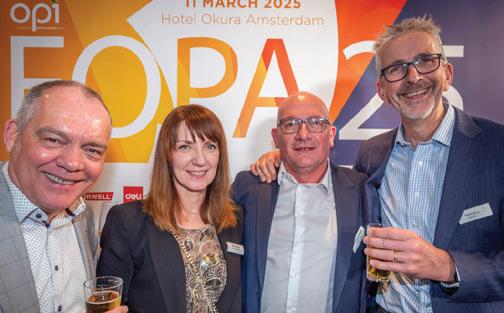
l Reseller of the Year
l Wholesaler of the Year
l Young Executive of the Year
l Executive of the Year
l Business Leader of the Year
l Industry Achievement
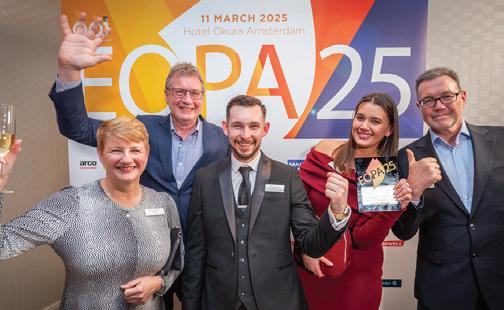


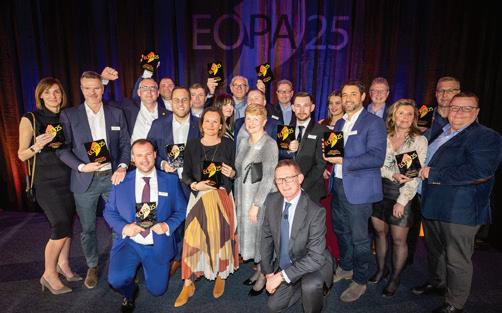



Winning an award can make a real difference to your business, so be sure to get involved. Simply complete an entry form online at www.opi.net/EOPA2026 or email your nominations to awards@opi.net. The closing date for entries is Friday 14 November 2025


it’s now or never!
There has never been a better time than now to target and win new business. There – I’ve said it. I’ve been dying to get that off my chest. Amid some of the toughest economic conditions many of us have faced – or ever will – I’ve decided to take the plunge and say something positive.
New business is crucial for any organisation –whether that’s from existing clients or opportunities with brand-new ones. Without it, staying afloat is a struggle, let alone prospering. So, is it a case of survival of the fittest?
Perhaps; though, in truth, it probably never has been any different. This time, however, with a seemingly endless stream of disappointing economic news and even gloomier predictions, there is the likelihood of greater existing client revenue pressures than we’ve seen for a while – particularly if you operate in a flat or contracting market, such as traditional office supplies.
As consultants specialising in sales growth services, I can tell you that the number one reason clients seek our support is the need to generate new revenue – and it’s not just limited to workplace supplies; this happens across every sector.
Why is that? One major factor is that operational costs have risen and will continue to increase. New business growth will help to compensate for these mounting costs. Another factor is that existing client
spend is either static or declining and your customers are feeling the same pressures as you are.
I would hope that by now, you are well on your way to a more diversified customer offering across the portfolio of products and services – one that provides the opportunity to sell more to existing clients. This is the first rule of a new business strategy: focus on growing what you already have. We’ve already published a handful of articles on this, designed to inspire the desire to make this happen.
The good news – at least from a new business perspective – is that this diversified solution is now, or very soon will be, more attractive to your customers than it has likely ever been. They will be more receptive to reducing costs through consolidation. They may also have fewer staff and therefore will be increasingly time


Gary Naphtali is a director at Sales Perfect
poor, making the prospect of managing fewer suppliers a very welcome relief.
The vast majority of companies are being forced to review what they do, become more efficient and costeffective and/or deliver greater value for money. Step one is to recognise that we need to be proactive. That means taking the initiative to existing clients rather than waiting for them to come to you.
It’s about revisiting product sectors you haven’t sold to them before and restating the benefits of singlesource supply – whether that’s furniture, FM, print, PPE or anything else currently off their radar. It’s about reassessing the mix of own-brand and alternative products and plugging the gaps.
It’s about helping clients to reduce their overall spend by spending more with you. That might even mean proposing a margin decrease on existing products if it secures additional ranges and increases average order values. The benefit is even greater if you can work with them to lower the cost to serve. In short: take the game to them.
We also need to be mindful of our pet clients coming under attack. If you’ve enjoyed a healthy relationship with those customers and even healthy margins, the chances are that somebody will target them as potential
new accounts. Ask yourself: which of your clients would you go after if you were a competitor?
If you are reading this thinking that you have an unbreakable relationship with your key clients, remember this: change may be forced upon them, too. Revisit those relationships and make sure you are connected at every level in the decision-making chain.
Ask yourself: which of your clients would you go after if you were a competitor?
I like to use the burglar analogy. If you had to break into your own house, how would you do it? That’s exactly what a burglar would work out – and it highlights your weakest point.
We have covered this in previous articles, but it bears repeating: now is the time to push forward and be proactive with existing customers, using your expanded solution. Most of all, though, with current customers, don’t be defensive.


Let’s get back to new business. Where do we start? Here’s a simple question for you: as a business owner or salesperson, how much brand-new revenue do you need just to stand still? In other words, if spend from existing clients is expected to slip, what level of new income is required to replace it? It may seem like a really obvious question, but you’d be amazed at how infrequently it is asked.
I spoke with a potential client recently who told me that they had a new business growth target of 10% for the year. So I asked how much existing business they expected to lose. Their answer? None. There were no current contracts about to expire, no ‘at-risk’ customers and the purchasing base was made up of secure, regular, established clients. The sales force was settled and experienced. “But what about change?” I asked. “Something always changes.”
In this particular client’s industry, the natural attrition rate was around 6-8%. Therefore, it would probably lose that proportion of customers through no fault of its own, no matter how good it was. To simply ‘stand still’, the new business target should have been at least 8% –just to be sure.
And that’s a fact of sales: something will happen that’s beyond your control. It will affect your client and potentially affect you as well. No matter what the current circumstances, things won’t stay the same.
The good news? Change is the biggest driver of new business opportunities there is. Without it, there is little need to look for alternatives; no reason to consider consolidation or incentive to seek new solutions. That’s why today’s economic climate should be seen for what it is: a forced wave of change. And change is magic pixie dust for growth.

Just don’t be fooled into thinking that you can stand still without it – because you almost certainly can’t. If you want to grow 10%, you will need to achieve double that to allow for this attrition. If this doesn’t happen, that’s great – but please factor it into your plans.
The most positive aspect of change is that it really does open the door to something brand-new – business that you’ve never had before or that has been with a competitor for years because the relationship has been stronger than the commercial dynamic. Has that shifted? Is change happening to them or their organisation? Most probably.
So, re-target them. Approach people you’ve engaged with previously – you may find that the door is just ever-so-slightly further open than before. And once you’re in? That’s the easy bit. Then you can win; but so can the other five companies that have been let in too.
What you have to do, of course, is increase your chances by making yours the most impressive offering on the table. How? Savings, service, personality, products? All of the above – and more. But that’s exactly what your competitors will do too, isn’t it? Maybe they will, maybe they won’t – you can’t control that.
What you can control is how you make your proposition as relevant as possible. To do that, you need to make sure that your salespeople know all the components of your offering and understand which parts to ‘sell’. I call this the ‘component proposition’.
Change is the biggest driver of new business opportunities there is
Buyers expect suppliers to provide the products needed, the service desired and proof that they can deliver on their promises

If you’ve been reading our articles, you’ll know that we like to keep things as simple as possible – and your client proposition is no different. There are just four foundational elements to an effective solution: products, service, company profile and your personal profile.
Unless a dealer offers a completely unique product or service, decisions are usually based on a mix of three factors: best value for money, strongest service offering and lowest level of risk for the business and personal wants/needs.
Buyers expect suppliers to provide the products needed, the service desired and proof that they can deliver on their promises – that’s where the company and personal profile come in. Evidence of your capabilities should never be undersold.
Likewise, the personal profile – whether yours or your salesperson’s – remains crucial. People still buy from people. Decisions are influenced not just by benefits, but by how comfortable clients feel with the choice. A commercial edge may be crucial, but it is undermined unless customers feel confident and secure in the supplier’s ability to deliver.
When you truly dissect your proposition and profile into these four areas, you’ll uncover dozens of key features and benefits to present. But which ones do you use – and when? To answer that, you need to ask lots of questions and learn as much as possible about your prospect. Once this is done, literally ‘match’ the key areas of the proposition to the client’s needs and wants – a process that I simply call ‘proposition matching’. Make it as personal to the potential target as possible. The discovery phase of the sales process is the most important part. You cannot propose a solution without
thorough discovery. You cannot handle objections, negotiate effectively or close opportunities that haven’t been properly ‘discovered’. My go-to (foundation) process in any sales situation is called SEQHIM –Status, Equipment, Quantity, History, Improvement and Motivation. I have been using it for more than 25 years and still do today. When applied properly, it reveals everything that you need to know about a client’s motivation and appetite for potential change.
Once I have ‘SEQHIM-ed’ the situation, another of my favourites is my own process called ‘PEPSI- Co’ – Product, Existing (supply chain), Personal, Service, Interpersonal and Commercial. I use it to ask probing questions and ensure that, when presenting a solution, I have covered these important areas in my proposal. If your proposition delivers benefits across all areas of PEPSI-Co, you will dramatically increase your chances of winning new business.
Next time you’re pitching, test yourself: does your proposal stand up in these key areas? Have you asked the right questions? Do you know enough to truly optimise your chances of success? Try it – and you’ll see the difference.
I like to ask questions in the discovery phase of the sales process using these frameworks, as it ensures that I’ve considered every key area. You may have your own – these are just a few things to think about.
New business is not easy. It relies on many factors, one of which is luck. In the absence of luck, focus on ‘change’ as the key driver of opportunity. And client change has never been stronger than it is right now –use it to your advantage. Good luck!

The pressures on dealers are intensifying. Rising e-commerce demand, increasingly diversified product portfolios and relentless price competition all add to the challenge of sustaining profitability. Success is no longer measured simply by the breadth of a product range or the competitiveness of a price list; it is defined by how effectively dealers sell, how seamlessly they deliver and how intelligently they use the data at their disposal.
In a marketplace shaped by speed, shifting expectations and tighter margins, technology has become the foundation on which growth, resilience and customer loyalty can be built.
Workplace360 asked several technology solutions providers to report on what they’re up to and their feedback reveals that they are helping to rewrite the rules of engagement, as the following pages demonstrate. Integrated systems, mobile apps, AIdriven tools and cloud platforms are enabling dealers to turn information into insight, insight into action and action into measurable results.
From proof-of-delivery apps that capture signatures on the move to integrated webshops and inventory tools that keep data accurate and up to date, the
emphasis is firmly on solving the pain points that slow down operations. Cloud-based platforms and centralised ERP systems have added a further layer of resilience and flexibility, while enabling systems to scale as dealers grow, support hybrid and remote working and deliver updates without disruption.
Today, technology is about clarity, not complexity; growth, not gimmicks
Sales teams can now work from anywhere, armed with tools offering real-time data; while customers benefit from smoother, more intuitive buying journeys, strengthening their trust in dealers. In addition, AI is beginning to play a pivotal role, streamlining workflows, highlighting new opportunities and forecasting demand with unprecedented precision.
Today, technology is about clarity, not complexity; growth, not gimmicks. By embracing it and bridging the gap between back-end operations, sales teams and customer experience, dealers can respond faster, reduce administration, simplify operations and maintain stronger customer relationships.

The pace of change these days is relentless. Clients expect tailored agreements, transparent pricing and quick responses. Dealers, meanwhile, face the daily challenge of balancing profitability with the need for long-term relationships. Office Power understands that managing contract pricing has traditionally been one of the most complex and time-consuming parts of running a dealer business. That’s why it is proud to introduce Contract Manager, a new feature designed to bring clarity, control and confidence to the way contract pricing is handled.
Pricing has long been considered a bit of a dark art for dealers – juggling inflation, competitor benchmarks, customer churn and endless spreadsheets, often without enough time or confidence to know whether their prices are correct. One of the biggest fears is losing accounts if prices increase. In reality, some deals may already be underperforming, draining time and margin without delivering real value. Contract Manager gives users the insights to separate high-value partnerships from those that are unsustainable, so focus can be placed on the right relationships.
Instead of navigating multiple spreadsheets and static price lists and manually updating information, dealers can now manage all customer-specific pricing on one central platform. The tool supports both rolling and fixed-date agreements, offers complete visibility of contract lines and integrates spend analysis and
comprehensive order history directly into the interface. This means that it’s easy to instantly see how individual products have performed – including revenue, margin and profit – before making adjustments.
In practice, it’s not only a powerful tool for monitoring success, but also a great guide to underperforming products or contracts, giving teams the confidence to take corrective action quickly. By entering either a price or a fixed margin, the system automatically calculates the other, allowing experimentation with different strategies based on real demand data. For customers, this translates into consistent, transparent pricing; for the dealer, it safeguards margins and reduces administrative overhead.
Dealers can now manage all customer-specific pricing on one central platform
Where Contract Manager really comes into its own is in strengthening relationships. The tool makes it simple to produce professional, customer-friendly outputs that break down pricing by category, reinforcing transparency and positioning dealers as trusted, cutting-edge business partners.
Add to that the ability to override group contract pricing with bespoke customer-specific rates and to manage bulk updates across multiple clients with the Pricing Uploader, and the result is a flexible system that puts users in the driving seat. And this is just the beginning; upcoming features will further enhance the insights that dealers can use to anticipate customer needs and drive growth.

At its heart, Contract Manager reflects what Office Power stands for: empowering dealers with the tools, insights and support they need to succeed. It’s about more than simplifying contracts; it’s about building stronger partnerships with customers, suppliers and one another.
And in an industry where change is constant, Office Power believes that strength lies in combining smart technology with the power of a connected network.
For more information, visit: officepower.net
year of growth, innovation and partnership
Over the past year, Comgem has focused on one goal: creating solutions that help businesses thrive. Not happy with just keeping pace with the digital landscape, the technology solutions provider has been shaping it, delivering tangible results for clients with a suite of new tools and features that afford greater control and flexibility.
A key highlight has been the launch of a powerful mobile app – a two-in-one package combining a dedicated sales rep tool with a customer-facing interface. For sales teams on the move, it puts the full power of the platform in their hands, making it easier to manage accounts, place orders and access real-time data from anywhere. For customers, the app provides a seamless and intuitive buying experience, with a dealer’s business a mere tap away.
Reporting capabilities have also been strengthened, delivering more granular insights to support smarter, data-driven decisions and boost revenue. With AI at the forefront of development, new functions are set to arrive later this year that will automate processes further, enable predictive analytics and deliver even more personalised experiences for dealers’ clients. Managing large product ranges can be complex, which is why Comgem has put significant energy into giving users more control. Flexible tools allow dealers to map supplier data directly to their systems, without the need for a product content provider. Comgem has also
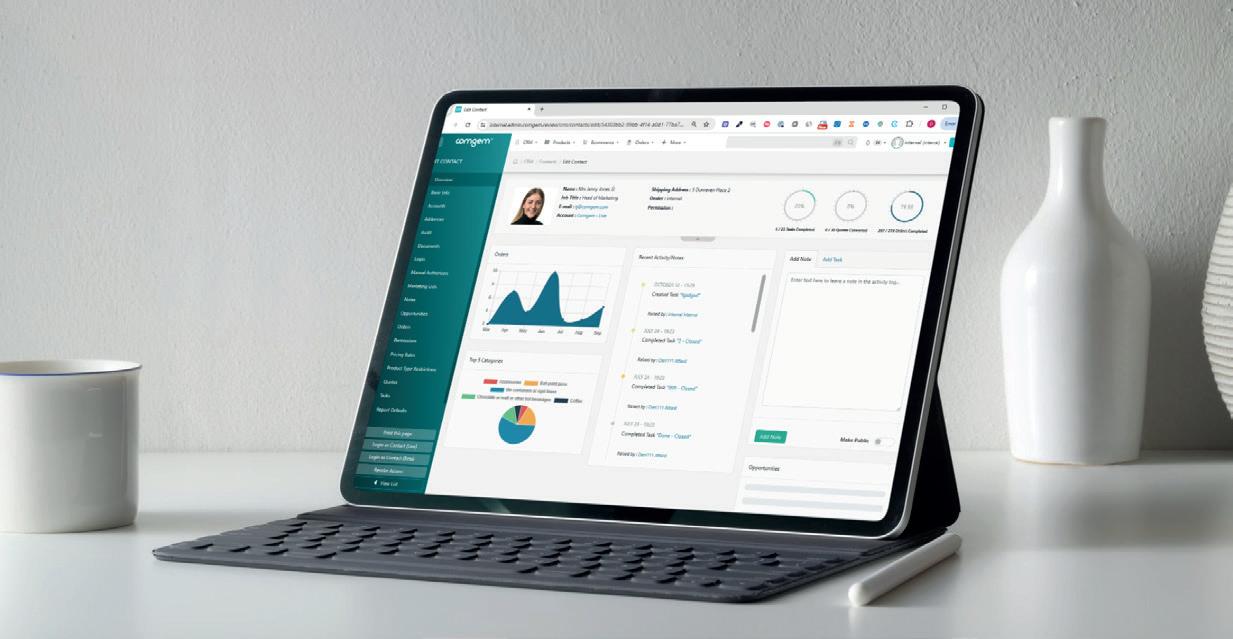
Ultimately, client success is the true measure of achievement
extended its platform to provide comprehensive support for complex product types – from customisable items and variations to product bundles – enabling dealers to offer a truly diverse and compelling selection and a clear, easy-to-navigate on-screen experience.
In a climate where cost-efficiency is paramount, Comgem’s fixed-price model has gained real momentum. This transparent approach eliminates unexpected per-user fees, offering the peace of mind that comes with a predictable budget. It’s a structure that resonates with resellers seeking the latest technology without unwelcome financial surprises.
Ultimately, client success is the true measure of achievement. Comgem is especially proud of the support it has provided to OWS, which has achieved outstanding results. By embracing the Comgem solution, OWS has seen online adoption rise from 30% to a remarkable 75% of its customer base.

This case study is a testament to what a business can achieve when it has the right tools at its disposal (for further details, read Workplace360 September
The past 12 months have been about pushing the boundaries of what a B2B platform can deliver. Comgem remains totally committed to this journey –equipping dealers with the tools and support they need not just to keep up, but to embrace a changing future and thrive.
For more information, visit: comgem.com
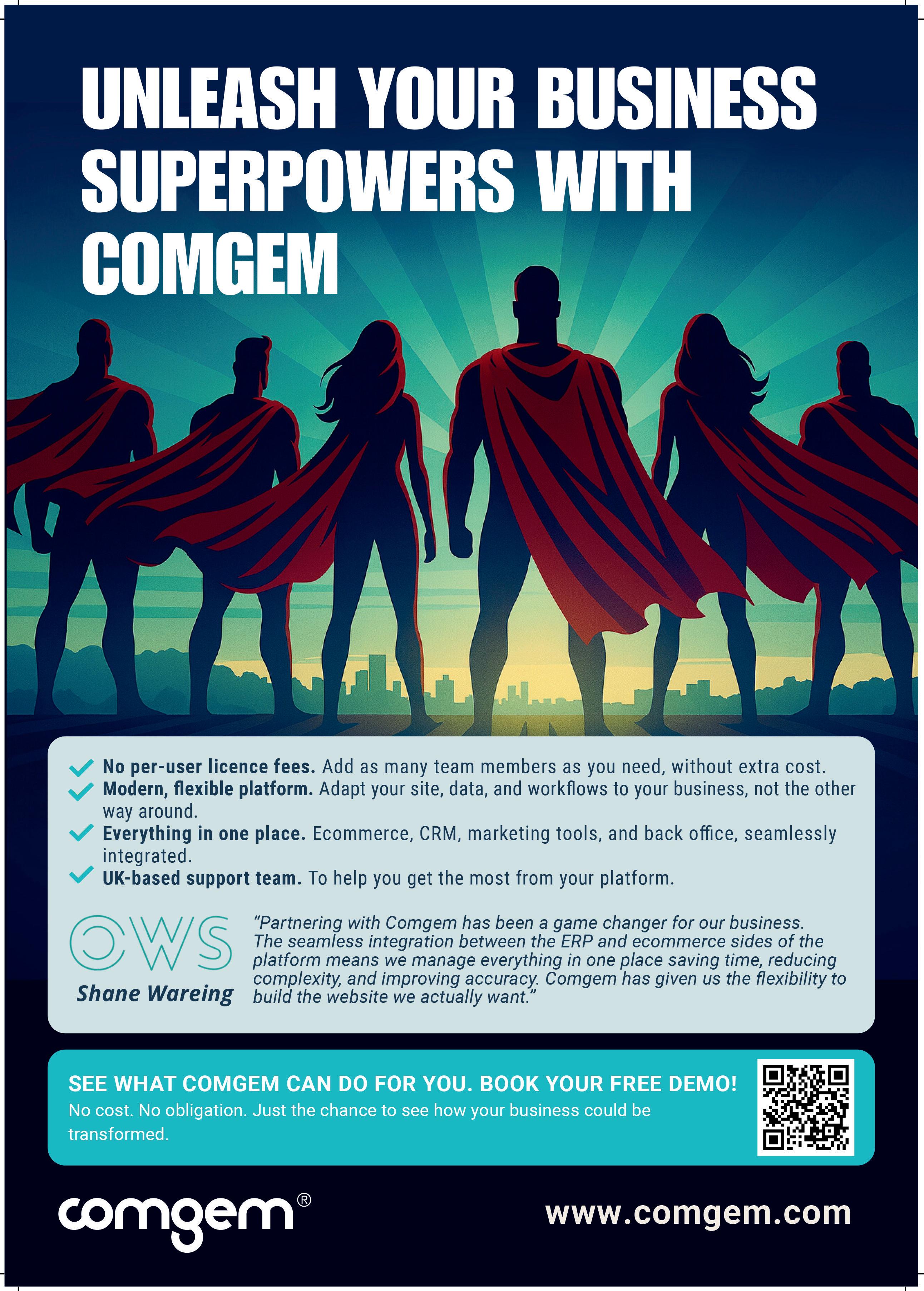
Rob Harper explains why dealers need a CRM that works with their ERP
It’s no surprise that the market has changed as demand for core OP has slowed, while categories such as catering, jan/san and furniture are on the rise. One of the main questions that needs answering is this: do you really know which of your customers are already buying these products from you and which are quietly spending their money elsewhere? Understanding these dynamics could make all the difference to your dealership.
Having a CRM that’s fully tied into your ERP […] isn’t a luxury; it’s essential
Many dealers have tried third-party CRMs, but the problem is that they aren’t fully integrated with the rest of the business. They can be costly and cumbersome, and all too often the data is out of date. The result? Sales teams end up wasting valuable time and leaders are left working blind.
With a CRM that’s fully integrated into your ERP, a very different picture starts to emerge. Live data reveals not only what’s being bought, but also where the gaps are and which conversations need to happen next. Add AI into the mix and salespeople gain an instant snapshot of each customer’s buying patterns – without having to dig through endless reports. It’s a system that makes selling simpler, faster and far more consistent across the board.
That’s exactly what we’ve built with Prima Engage. It’s not just another tool – it’s about putting a sales system and process in place that actually work
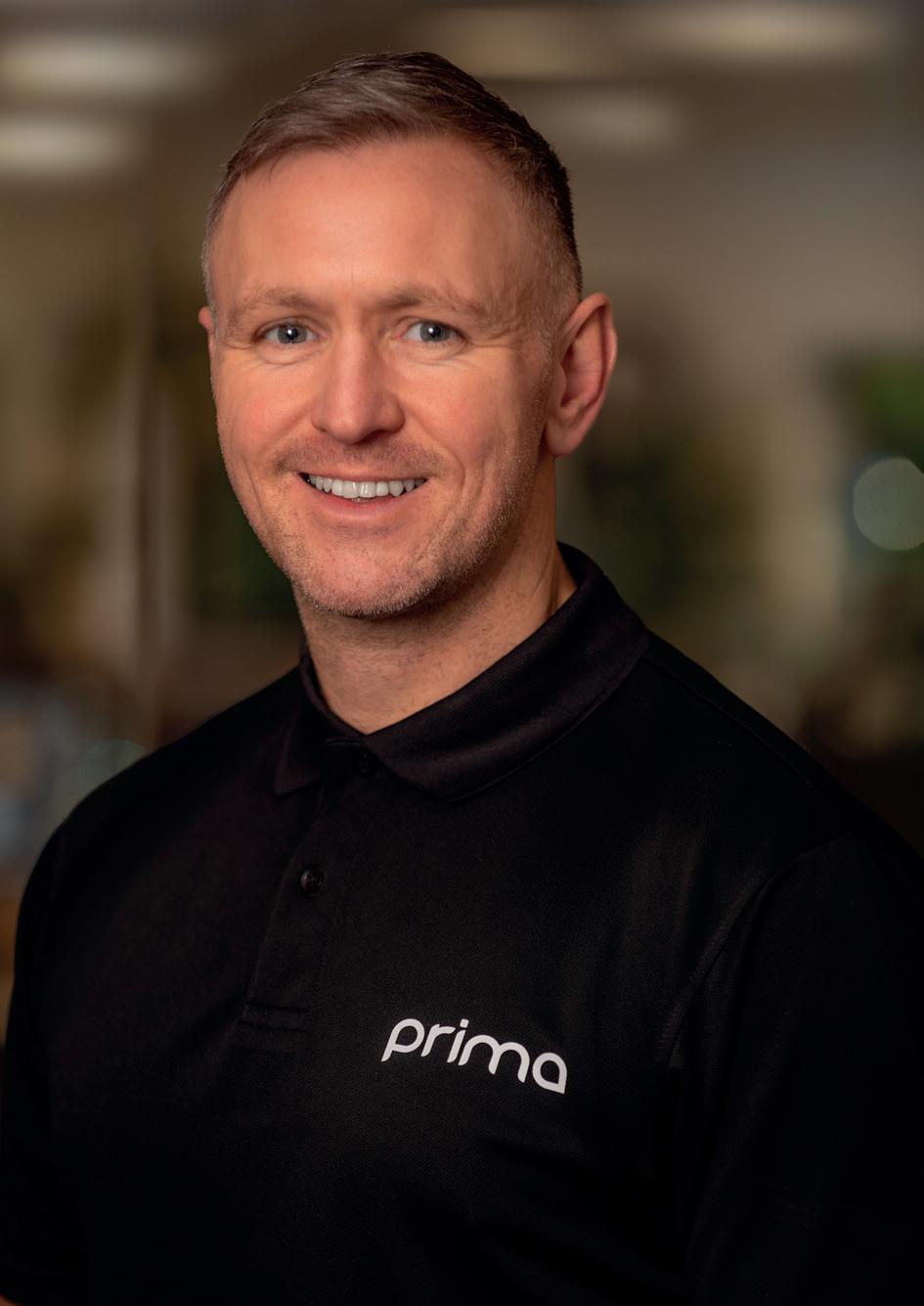
throughout the whole business. Dealers using Prima Engage are closing quotes faster, winning a bigger share of their customers’ spend, building stronger retention through regular and meaningful contact and significantly reducing admin time for their sales teams.
In practice, this means that reps spend more time in front of customers and less time juggling spreadsheets, while managers get the visibility they need to plan, forecast and spot new opportunities.
For dealers, the outcome is clear: Prima Engage keeps you closer to customers, makes smarter use of your data and ensures that you’re not leaving money on the table. With product mix changing faster than ever and margins tightening by the day, having a CRM that’s fully tied into your ERP and powered by real-time insight isn’t a luxury; it’s essential.
For more information, visit: primasoftware.co.uk
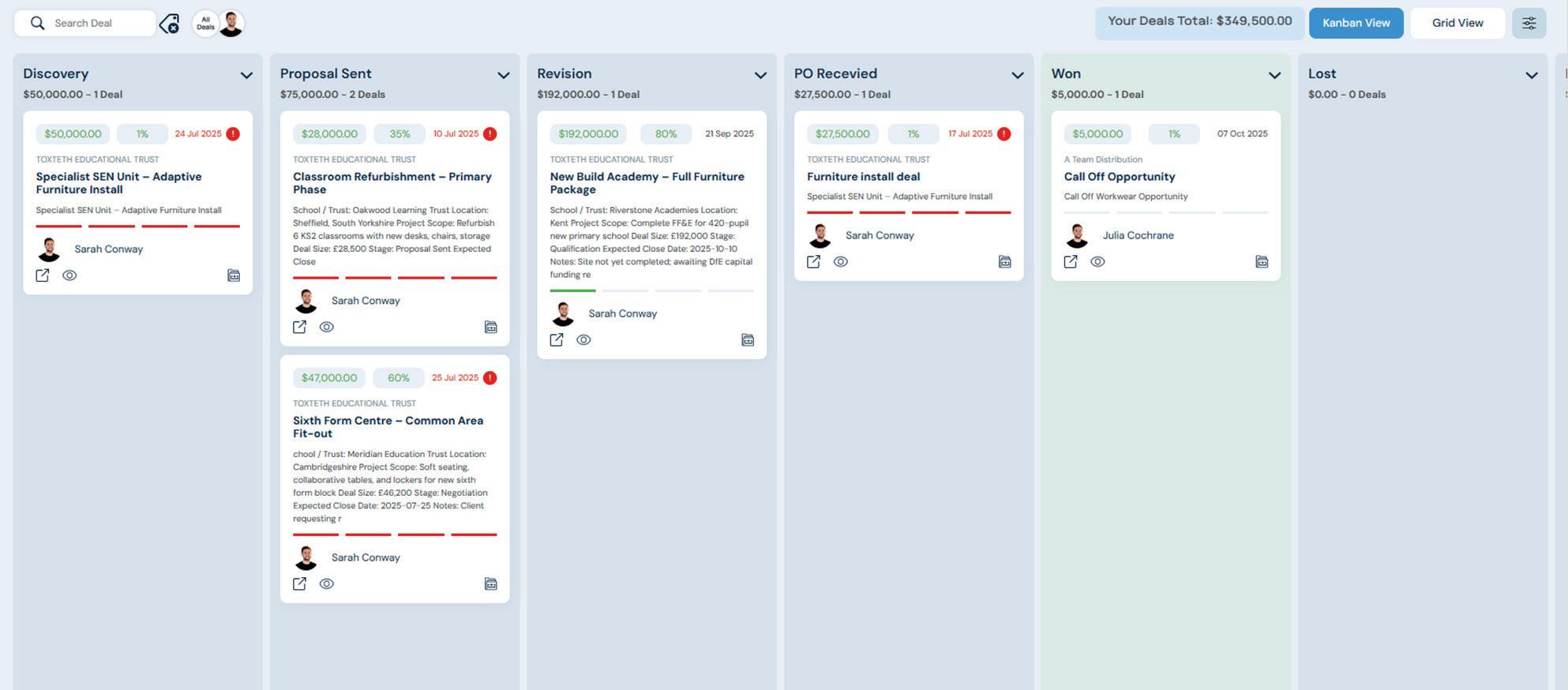

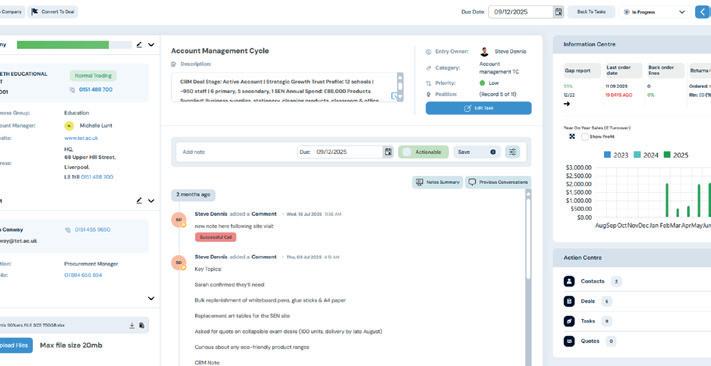
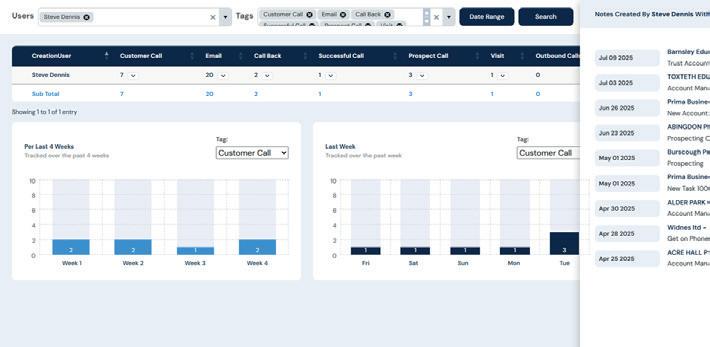

Brian Bowerfind looks at the current state of play in the tech world
Customer expectations remain high and the dealers that are rising to the occasion are those taking a strategic approach to the adoption of technology. Tools that power e-commerce, ERP and AI can now able to deliver real results which improve the bottom line.
Even the most seasoned operators are facing the reality that what worked five years ago doesn’t scale the same way today. It’s time to bridge the digital disconnect. Disparate systems continue to be a stumbling block, limiting scale, speed and insight.
A growing number of dealers are already embracing connected tools such as CRM, SEO, email marketing and cart recovery tactics to enhance e-commerce performance. Yet for many, centralised data, automated workflows and real-time reporting are still out of reach. Technology partners and wholesalers must step forward to provide better support, not just more SKUs or platforms. Centralised systems need to join the dots, not just provide additional tools.
Diversification remains a key growth lever for dealers, but it comes with added complexity. Expanding into categories such as jan/san or breakroom is one thing. Entering furniture is another. Configurable products, longer lead times, variable freight and multi-vendor coordination all push beyond what disconnected systems can handle.
This is where integrated platforms are essential facilitators of growth. Dealers finding success in furniture aren’t doing it manually; they’re relying on connected ERP, e-commerce and planning tools that tie quoting, sourcing and fulfilment into a single workflow. These systems help to preserve margins on high-ticket items while improving the customer experience across the board.
It’s hard to get far into any technology conversation without arriving at the issue of AI. Although much concern centres on not being left behind, there is plenty of apprehension on the other end too – not wanting to fall victim to any hype cycles.
At the end of the day, there has to be a clear ROI for dealers. All AI is not created equally – it’s neither a magic fix nor something to ignore. What sets successful

systems apart is an ability to meet dealers where their needs are, future-proofing technology that integrates processes, centralises data management and reports with analytic capabilities.
AI is not a fix-all and dealers must choose the right models for them
The transformative functionalities of AI are becoming more sophisticated. This is especially the case when embedded into something that dealers already rely on, such as an ERP system. The most efficient uses of AI remove friction and reduce repetitive work.
By flagging abnormalities, detecting fraud and automating repeat orders based on historical data, AI can streamline end-to-end business management. AI-driven insights aid in automating workflows, helping dealers to evolve in how they manage customer relationships. Predictive analytics can highlight likely needs before they’re voiced and generative tools facilitate interactions at scale. Personalisation is possible without demanding more time from teams at full capacity. The potential is exciting, but AI is not a fixall and dealers must choose the right models for them. For more information, visit: ecisolutions.com
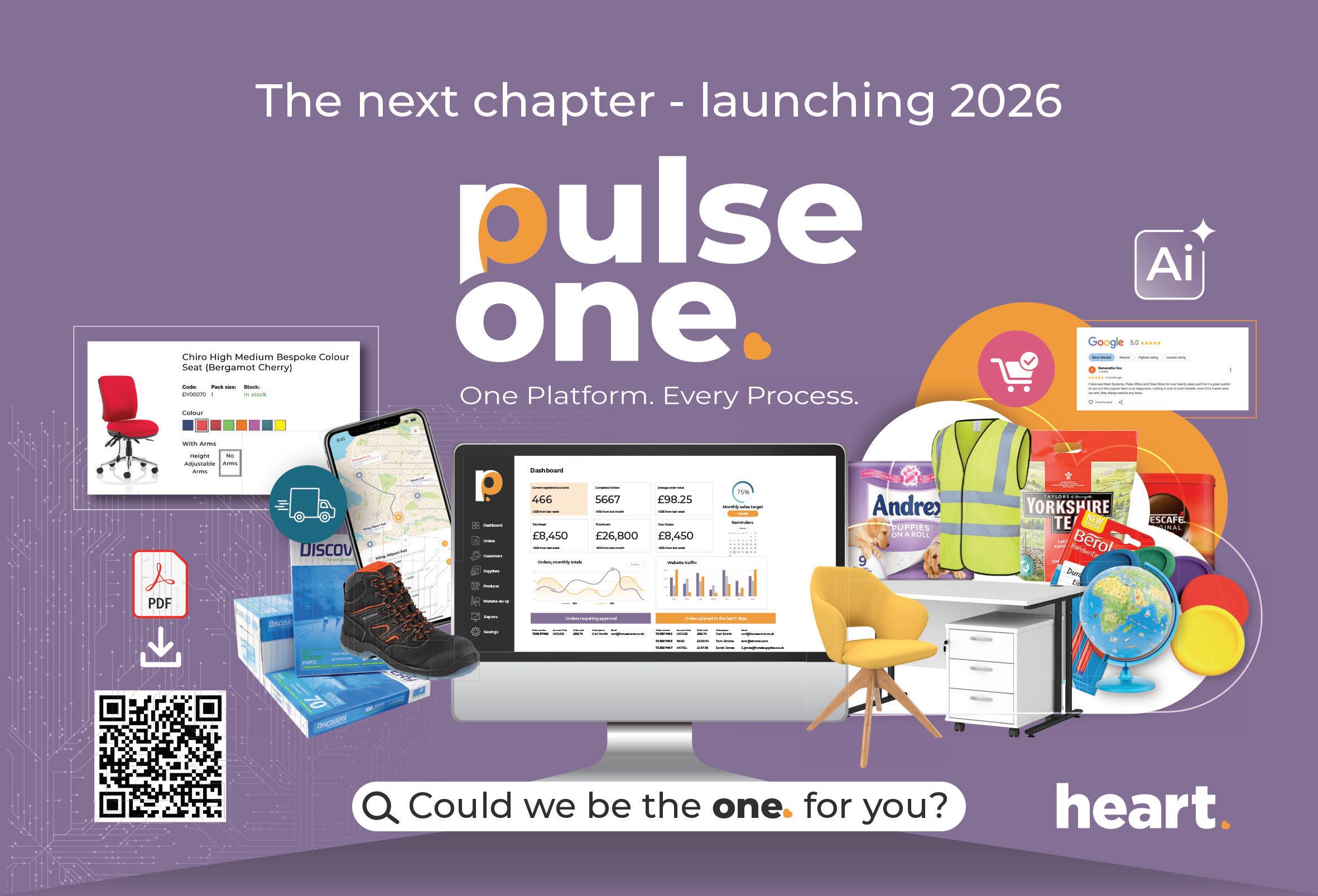
Heart Systems is set to launch its next-generation software for changing dealer needs HEART SYSTEMS
As technology advances at an ever-faster pace, software providers are reimagining how to deliver lasting value to their customers.
Heart Systems has embraced this shift with PulseOne – a web-based platform that gives dealers a more resilient, scalable and flexible system accessible from any browser.
One of the most significant advantages of cloud deployment is long-term compatibility. Operating systems and supporting frameworks evolve rapidly, and PulseOne is built to stay aligned with the latest updates without the disruption and cost of repeated hardware refreshes. The platform also offers scalability on demand, allowing businesses to add capacity as they grow without major infrastructure projects.
Equally important are resilience and security. By leveraging cloud architecture, PulseOne provides built-in redundancy, continuous patching and enterprise-grade safeguards to reduce the risk of downtime or data
breaches. In a market where remote and hybrid working have become the norm, the ability for employees to access business-critical tools securely from any location or device adds further value.
PAVING
The shift to the cloud also makes innovation faster and more responsive. Updates and new features can be delivered more frequently and with less disruption, ensuring that the software evolves alongside customer requirements. Heart Systems is also laying the groundwork for AI integration, positioning PulseOne to take advantage of predictive analytics, intelligent automation, personalised user experiences and real-time security monitoring.
Looking ahead, Heart Systems has confirmed that PulseOne is scheduled for release in 2026. While still in development, the platform is being designed with future growth firmly in mind.
Dealers can expect a system that balances stability with innovation, offering greater resilience, smarter features and the flexibility needed to thrive in an increasingly competitive environment. For more information, visit: heartsystems.co.uk

PBS Network is changing the way the supply chain works, says Chris Exner
In today’s dynamic workplace supplies industry, manufacturers and dealers alike are under pressure from shrinking sales, increased competition and an ever-evolving marketplace. With sales harder to come by and operational costs on the rise, now more than ever, the sector needs smarter, more efficient ways to connect, transact and grow.
One solution is PBS Network, an industry-leading platform for centralised product data and transactional efficiency. Established by a group of leading manufacturers with one vision in mind – to empower the entire distribution channel – PBS Network is transforming how business is done.
At its core, PBS Network aggregates and centralises data from hundreds of manufacturers across the full range of business supplies. The platform offers unparalleled access to high-quality, up-to-date product information, complemented by rich digital content.
Whether you’re a manufacturer seeking to reach new customers or a dealer looking for reliable access to an extensive product range, PBS Network offers a gateway to growth. With a wide selection of SKUs currently
available, the platform delivers instant access to a wealth of structured product data, cutting-edge content and real-time updates – all accessible through a single, standardised interface.
Key features of PBS Network:
• Sales opportunities: Leverage new channels and boost product visibility through a comprehensive data network.
• Cost efficiency: Cut down on manual data entry, catalogue management and time-consuming back-and-forth between suppliers and dealers.
• Time savings: A single interface means faster onboarding, quicker updates and smoother transactions.
• Competitiveness: Access rich, accurate content that drives online engagement and customer confidence.
PBS Network isn’t just another tool – it’s a critical component in future-proofing a business.
For more information, visit: pbsnetwork.eu



Since its inception in 1989, Calidore’s commitment to innovation has remained unwavering. By refining its offerings, listening to clients and focusing on practical technology, it empowers businesses to advance confidently.
Success in the workplace supplies sector today depends on implementing and adapting technology that drives growth. To this end, Calidore’s collaboration with the STRONGER Business Partners group – an alliance of owner-run technology companies specialising in
Success today [...] depends on implementing and adapting technology that drives growth
all aspects of digital business services – has been a catalyst for meaningful transformation in the past year.
The partnership has prioritised not only the development of software but also the creation of an ecosystem that anticipates and addresses the evolving pressures faced by dealers.
Delivery management was once a major hurdle for dealers, with lost paperwork and delays often leading

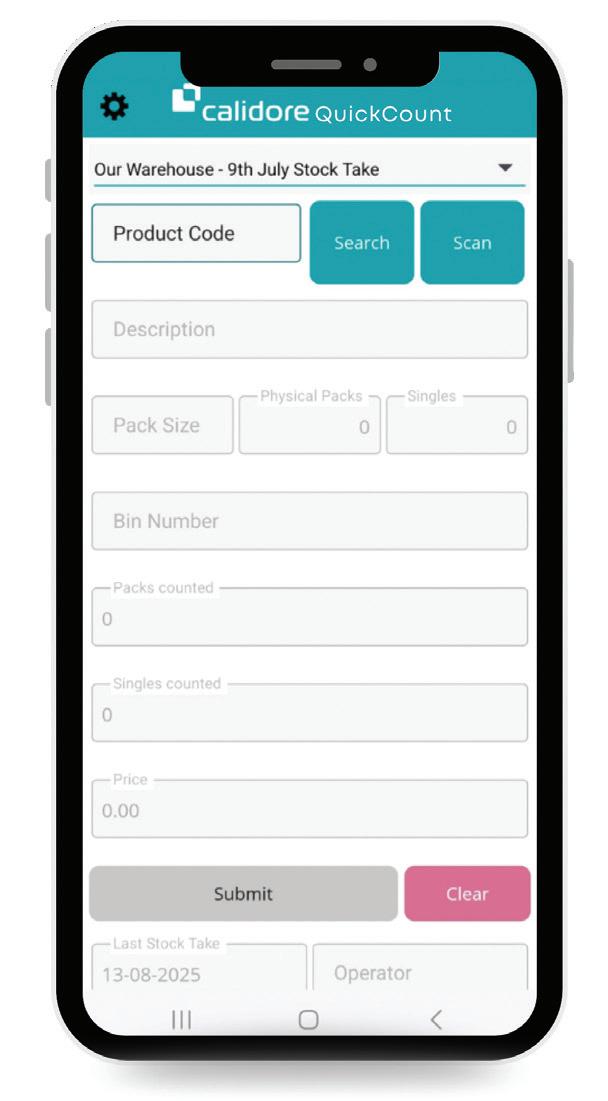
to disputes. To tackle this, the Proof of Delivery (POD) app was launched. This tool enables drivers to capture signatures, photographs and timestamps directly on their mobile devices, ensuring that every consignment is recorded transparently. The result is less administration, quicker resolution of queries and deeper customer relationships.
Clients depend on daily drop-offs, but keeping data consistent between drivers and operations can be difficult. The POD app seamlessly updates shipment records in the ERP system, reducing errors and improving communication between delivery and supplier teams.
Stock control also poses frustrations, often requiring days of manual counts. To circumvent this, QuickCount was introduced in September – an app that scans inventory and updates it in real time, ensuring greater accuracy and better control across all sales channels.
With e-commerce gradually increasing in the B2B space, tracking sales across various channels can be complex. Calidore’s integrated webshop connects sales and back-end systems, making order management easier and enhancing the customer experience.
Calidore is [...] piloting AI Assist, a smart support tool that delivers quick answers to everyday questions
Access to reliable data is essential for sound decisionmaking. Calidore’s custom dashboards provide clients with clear insights into sales and operations, enabling them to forecast demand, identify trends and make informed choices with greater confidence.
Calidore is also piloting AI Assist, a smart support tool that delivers quick answers to everyday questions. This helps customers to save time, supports training and reduces the wait for solutions.
All these innovations are underpinned by a belief in partnership-led growth. By collaborating closely with STRONGER Business Partners and listening to its clients, Calidore continues to build a framework that supports businesses at every stage. For more information, please visit: calidore.com

SMEs are punching above their weight in workplace experience, says Alex Kerr
When it comes to workplace experience, size isn’t everything. The latest Sunday Times Best Small Places to Work 2025 proves this, ranking 202 UK SMEs ahead of many household-name organisations. The secret? A focus on wellbeing, culture and innovative workspaces that employees genuinely want to be part of.
These findings reflect a wider trend. Employees now expect more from their workplace than just a desk and a wifi connection. Research suggests that 84% of workers view the office as an experience. When the workplace is designed with intent, the benefits are clear.
CULTURE MEETS DESIGN
While larger corporates may boast resources, SMEs often hold the trump card in culture. With flatter hierarchies and more connected teams, they can create environments where values feel tangible and leadership is visible. But what gives SMEs a competitive edge is the ability to translate culture into physical design choices.
The Leesman Index – one of the world’s largest databases on workplace experience – reveals a sobering truth: many employees believe their homes offer a more effective working environment than their offices. For SMEs, this insight is less a threat and more a call to action. By applying evidence-based design principles, smaller businesses can create spaces that not only rival but surpass the comforts of home.
Larger corporations often face lengthy approval cycles, budget silos and procurement processes that dilute design ambition. SMEs, by contrast, benefit from:
• Agility: The ability to make swift design decisions without bureaucracy.
• Authenticity: Leadership teams that are directly involved in, and genuinely care about, shaping the employee experience.
• Personalisation: Smaller teams allow for tailored design choices that reflect specific working styles.
• Speed to action: Changes can be implemented in months, not years.
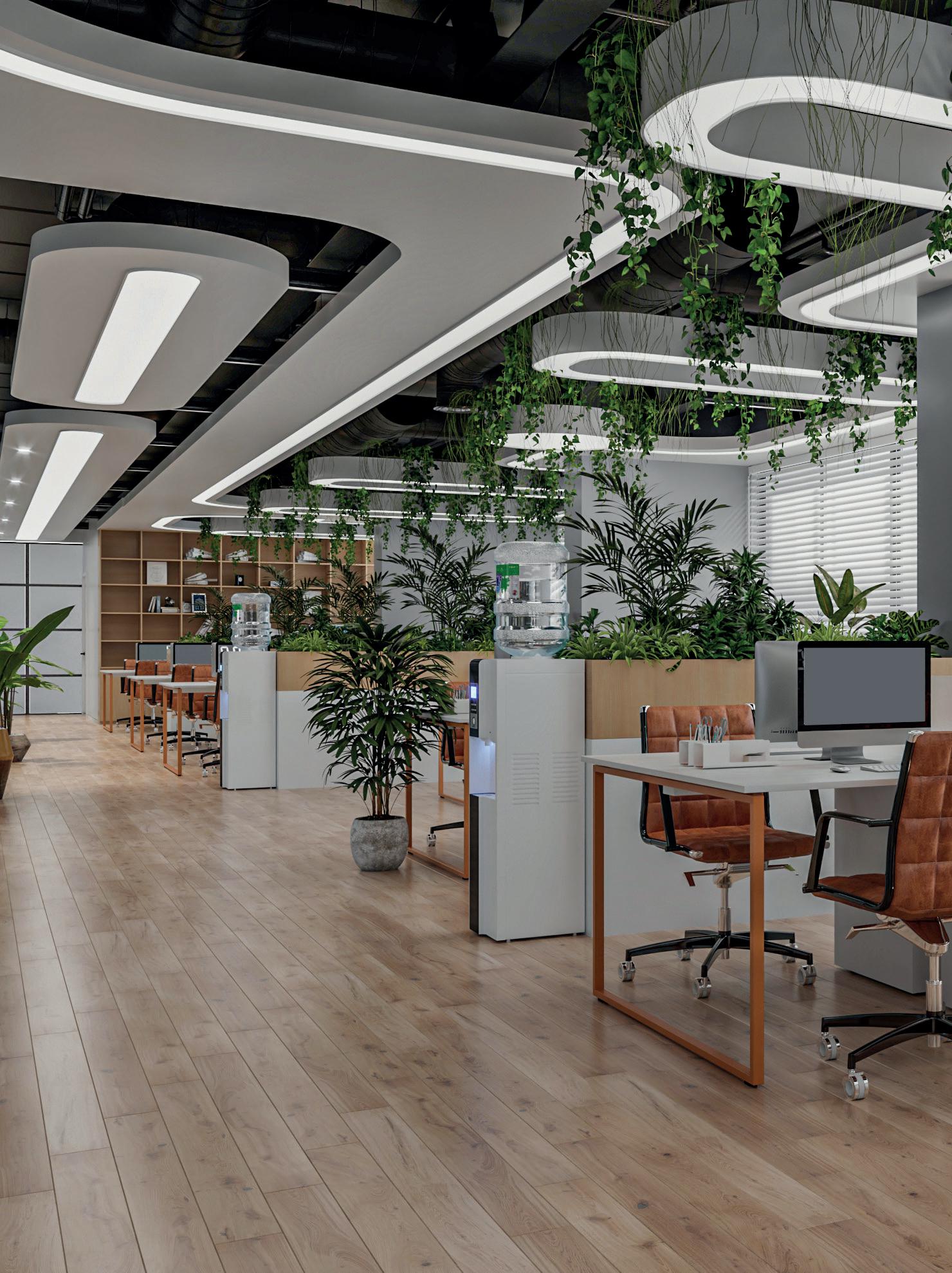
This ability to move from insight to implementation without delay means SMEs can deliver workspaces that are both aspirational and practical – aligning culture, wellbeing and productivity in ways larger organisations often struggle to achieve.
SMEs that succeed in creating outstanding workplaces share one key trait: intentionality. It’s not about filling space with furniture. It’s about understanding how people like to work and what motivates them, and then designing around those insights.
Kerr Office Group outlines a five-step roadmap to take office design from satisfactory to outstanding:
1. Don’t presume
Too often, organisations assume they know how employees use space. Instead, begin with workplace diagnostics such as space utilisation studies, staff surveys and observational analysis. Tools such as sensor data or heat maps can reveal surprising patterns – underused meeting rooms or bottlenecks in circulation, for example.
Action: Run an anonymous staff survey alongside observational walk-throughs. Map the ‘typical working day’ and compare this with how the office currently supports it.
2. Anchor in culture
Design should be a physical extension of the company’s DNA. If an organisation prides itself on creativity, then open collaboration spaces with writable walls or flexible furniture may reinforce that identity. If it’s a professional services firm, clientready zones with acoustic privacy and premium finishes may take priority.


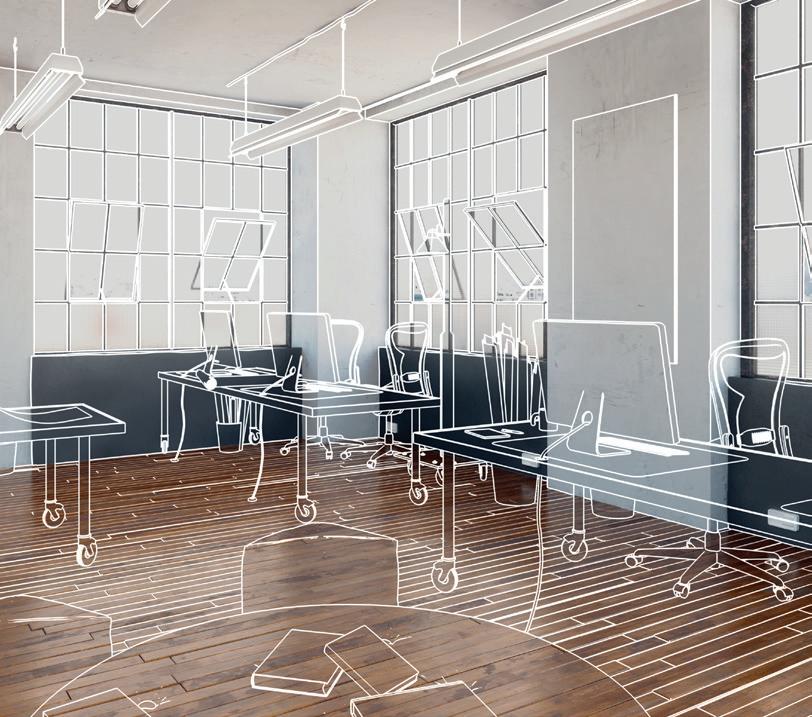
The most successful workplaces are those treated as living assets, not finished products
Action: Translate company values into spatial needs. For instance, ‘community’ could become a café-style social hub, while ‘innovation’ might be embodied in project labs or agile working zones.
3. Wellbeing as standard
Wellbeing is no longer a ‘nice to have’ but an expectation – and SMEs can deliver it without inflated budgets. Natural light, plants, ergonomic furniture and quiet zones all support health; while functional elements such as acoustics, air quality and temperature are just as critical. Where space allows, amenities such as a gym, yoga studio or showers can be transformational, enabling staff to fit wellbeing into the workday. Even smaller steps – local gym partnerships, bike storage or wellness rooms – position the office as an enabler of healthier lifestyles.
Action: Audit employees’ current pain points. Are people struggling with noise? Is the lighting too harsh for screen work? Prioritise low-cost interventions such as plants, acoustic panels and adjustable lighting before major redesigns, then consider how to layer in additional wellbeing touchpoints.
4. Design for flexibility
Work patterns shift – and office layouts should keep pace. Instead of fixed desk ratios, SMEs can opt for modular furniture, moveable walls and multipurpose spaces. This approach enables offices to flex between focused work, collaboration and social use, ensuring relevance even as headcount or hybrid models change.
5. Measure, learn, evolve
The most successful workplaces are those treated as living assets, not finished products. Post-occupancy evaluations – surveys, informal feedback sessions or utilisation data – ensure design continues to meet evolving needs. SMEs can move faster than corporates in responding to this feedback loop, making iterative changes that keep spaces fresh and relevant.
Action: Establish a quarterly workspace review with employees. Track satisfaction against clear metrics such as collaboration effectiveness, focus ability and wellbeing, and commit to one small change per quarter.
As expectations rise, SMEs are uniquely positioned to respond with agility and authenticity. They may not have the vast resources of multinational corporates, but their ability to make evidence-informed design decisions quickly and in alignment with their culture means they can deliver environments that genuinely enhance the employee experience.
The workplace is no longer about square footage or headcount. It’s about intentionality, culture and design. In this space, SMEs are demonstrating that bigger isn’t always better.
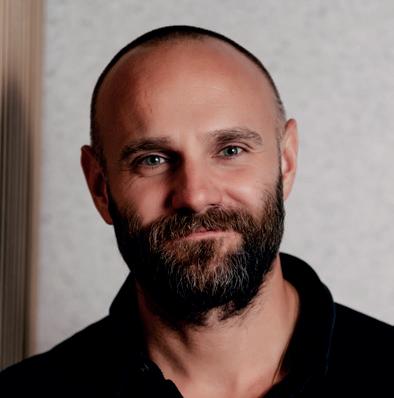
Alex Kerr is CEO of Kerr Office Group

November in the Lakes means one thing – the Climb of Life is on
Now entering its 19th year of support for the Institute of Cancer Research (ICR), industry members will once again head to the Lake District on 14 November for the 38th Climb of Life (COL).
This year’s theme – Never Doing Things by Halves – reflects a key milestone: exactly half of COL’s fundraising years have been dedicated to the ICR, helping to finance its world-class discovery programme into new treatments for multiple forms of cancer.
With more than £2 million raised to date, COL is firmly established as one of our sector’s proudest philanthropic achievements. Last year alone, climbers collected over £93,000 in sponsorship monies and organisers hope to approach this impressive total again in 2025.
Over 100 participants, split into groups, are expected to take part to tackle some of the Lake District’s toughest peaks. The trek is physically demanding, often continuing long after sunset, but spirits always remain high as each step taken and each donation received helps bring hope to the one in two people who will face cancer in their lifetime.
COL ambassador Graeme Chapman MBE continues to inspire with his unwavering commitment, while event organiser Philip Lawson and his team of volunteers are tirelessly conducting the essential groundwork behind the scenes. This year’s roster will once again feature strong support from across the industry as well as leading ICR researchers. As Lawson notes: “It’s incredibly motivating to walk alongside those on the front line of cancer research. The conversations we share remind us exactly why we do it.”
Workplace360 Chief Commercial Officer Jade Wilson, who first joined COL in 2024, adds: “The challenge was tough, but every minute felt like a tribute to individuals we’ve lost and a show of support for those still fighting.”
The Swan Hotel in Grasmere will serve as the climbers’ base camp, offering a welcome refuge after the day’s exertions. For many, however, the real comfort lies in knowing their efforts fund lifesaving breakthroughs.
Lawson emphasises that the backing of the workplace supplies sector is vital to COL’s success, particularly in today’s challenging economy. Companies such as Avery, ACCO Brands, BOSS Federation, Durable, CTS Wholesale, Hamelin, Office Power and Workplace360 are among those leading the fundraising.
“Our industry stands shoulder to shoulder. Both companies and individuals put aside the day-today pressures to focus on something much bigger than ourselves,” says Wilson.
To take part, email Philip Lawson at climboflife2025@gmail.com. To donate, please visit www.justgiving.com/page/col2025.

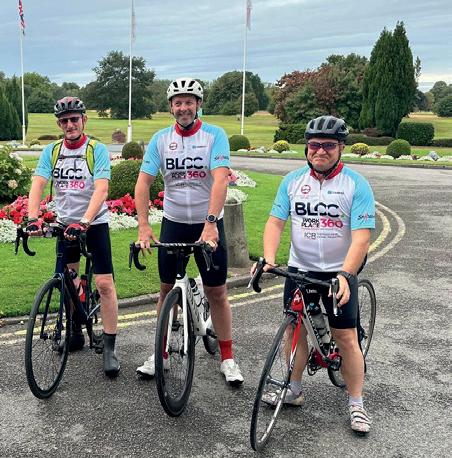
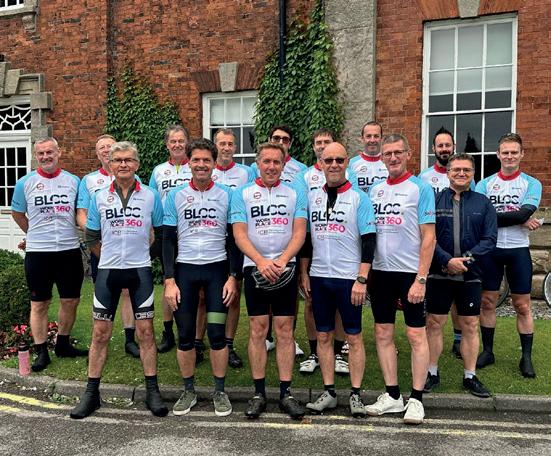
The Ride of Life 2025 proved that every mile counts in the fight against cancer
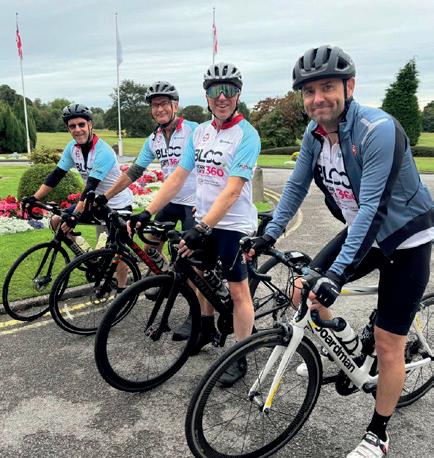

Tof publication, this year’s total had already surpassed £11,000.
he Ride of Life 2025 charity cycling event was a resounding success, with determined riders tackling a new 62-mile route through Cheshire, starting and finishing at Mottram Hall. Featuring nearly 3,000 ft of climbing, it provided both a physical challenge and an opportunity to enjoy some of the region’s most picturesque scenery.
Now a much-anticipated fixture in the workplace supplies calendar, the 2025 ride continued the tradition of supporting the Institute of Cancer Research. Held on 4 September, the event brought together cycling enthusiasts from across the industry with a shared goal: to raise funds and awareness for cancer research. At the time
The day offered a feast for the senses as riders pedalled through rolling Cheshire countryside and experienced a little of the magnificent Peak District, glimpsed the iconic Jodrell Bank telescope, saw the homes and cars of the Northwest’s well-heeled and paused for a wonderful lunch at Tatton Park.
Event coordinators Steve Robinson and Matthew Whelan expressed their heartfelt thanks to all participants, supporters and especially the sponsors: “Thank you to everyone for taking the time out of their busy lives to support the Ride of Life so enthusiastically.”
Plans for next year’s event are already being considered, with potential locations including the southern Peak District, Yorkshire, Leicestershire/Rutland, Wiltshire and North Wales.
Despite Manchester’s notorious weather –torrential rain and storms sweeping across the region – around 60 Old Friends and guests braved the elements to gather for the second year running for the Northern Summer Clachan. Held at the city’s aptly named Rain Bar, a former umbrella factory turned bar and party venue, the symbolism wasn’t lost on anyone. From the moment guests arrived, the atmosphere was lively yet laid-back, creating a welcoming environment that encouraged conversation, laughter and plenty of storytelling.
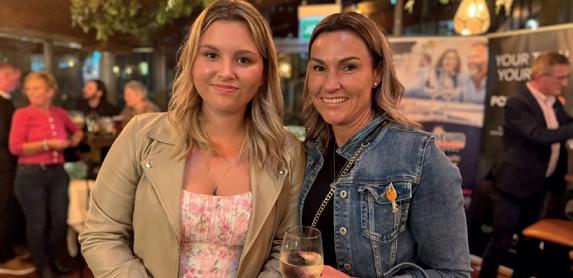
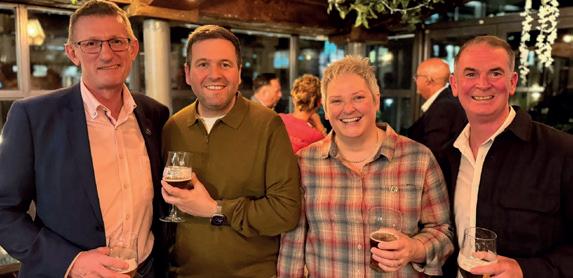


The Society of Old Friends once again showed that a little rain can’t dampen fellowship
Notably, nearly one-third of attendees were women – a sign of an evolving and increasingly inclusive membership. First-time guests were warmly greeted by seasoned members, reinforcing the Society’s founding spirit of fellowship and connection.
The evening was supported by sponsors Reckitt and EO Group and the raffle proved a hit, raising nearly £900. As the night wore on, the conviviality only grew and many guests had to be gently coaxed to make their way home – or onward to the official afterparty, where the revelries continued.




Excellence is signed, sealed and delivered with a Stationers’ Company Warrant
Still championing quality after 622 years, the Stationers’ Company continues to uphold its long tradition of excellence. “Quality has always been at the heart of the Stationers’ Company and we can thank the craftsmanship of past members for ensuring that so many historical records have stood the test of time,” says newly appointed Chair of the Stationers’ Company Warrant Panel John Livingston.
Manufacturers, service providers and media organisations can apply for a Stationers’ Warrant –a mark of excellence awarded to a specific product, product range or service, rather than to a company as a whole. The logo can be displayed on products, packaging and promotional materials, as well as on professional letterheads and emails, making it a powerful tool in marketing and promotional activity. Current Warrant holders include Victor Stationery, Integra Business Solutions, Prima Software, EO Group and OPI.
The panel of judges is assembled from some of the most experienced names in the industry. They are looking for quality, relevance to the sector, sustainability and ethical trading. Says Livingston: “There is normally a panel member who knows the organisation applying and can add background information before we make a decision.
“We often request additional information before granting or refusing an application, which is why the deadline for 2026 Warrants is set for 9 December 2025.”
Successful recipients can begin using the Warrant from the start of the calendar year.
“We support holders to make the most of the award,” continues Livingston. “We flood the trade press with news of their success and are always delighted when recipients take to social media to share the achievement with their customers.”
It is an honour to be part of a 600-year-old tradition
The distinguished gold logo works particularly well on stationery products. Victor Stationery, for example, uses it on Rhino Flexiback Notebooks to stand out from competitors online. It also lends prestige in the premium market: for example, bespoke British Pens produces fountain pens that are works of art.
Giles Fagan, Clerk (CEO) of the Stationers’ Company, states: “Early Stationers’ included craftsmen who illuminated manuscripts. We are delighted to continue supporting and endorsing real craftsmanship from our founding trades, alongside innovative products and services that enrich the content and communication industries.”
The Stationers’ Company is keen to widen the range of Warrant holders to reflect the diversity of product categories that customers expect, such as packaging. The Warrant has also helped to highlight emerging opportunities for dealers such as Haybrooke, with its PDQ Print Hub.
Presentations of the formal certificate will take place at The Livery Lunch on 9 March 2026, held at the beautiful Stationers’ Hall in London, just 400 yards from the site where the Company was founded in 1403. Recipients are welcome to bring customers and prospects to witness them receiving their Warrant. “It is an honour to be part of a 600-year-old tradition that helps those producing quality products in our industry to thrive,” comments Livingston.



Irecently attended a local business collective and was reminded how much bravery plays a part in both our personal and business lives. It isn’t just about grand, dramatic gestures and moments; it’s woven into everyday choices and challenges. It’s not reserved for heroes; it’s something we all draw on, often without even realising it.
Looking back at my own life, I can see how acts of personal courage set the stage for facing obstacles at work. Growing up, being brave meant speaking up for myself, trying new things or admitting when I was scared. Sometimes it was choosing honesty over fitting in or leaping into a new job without a clear plan.
One huge moment came when I was forced off a safe, predictable path for a new one when my husband of 25 years walked out. Family and friends were worried – so was I – yet I felt compelled to chase something more meaningful, even if that began with nothing more than getting out of bed each morning and making the now commonplace bucket list.
LESSONS IN COURAGE
Every time you act bravely, you discover hidden strengths and learn that setbacks are simply stepping stones. It boosts empathy, too, helping you better understand and appreciate others’ struggles. These experiences don’t just make you tougher; they make you kinder and more open-minded.
Personal courage doesn’t vanish when you clock in at work – it comes with you. The confidence and resilience built in life help you take smart risks, face tough calls and try new things. Business isn’t just about having all the answers; it’s about stepping into the unknown:
• Taking risks: Whether it’s pitching a new idea or launching a project from scratch, you need nerves of steel to move forward without guarantees.
• Bouncing back: Mistakes happen, but bravery means learning from them rather than giving up.
• Real leadership: Authentic leaders admit mistakes and stay true to their values.
• Handling conflict: Facing disagreements takes guts but leads to real solutions.
• Leading change: Brave leaders welcome new ideas and inspire their teams to grow.
At work, bravery isn’t only found in major decisions. It’s in the daily choice to act with honesty, ask questions and admit when you need support. Teams thrive when people feel safe to speak up and experiment – with mistakes seen as part of experience, not something to hide.
Constructing this environment takes effort. It means creating a space where everyone feels comfortable taking chances and supported when things go wrong. The best teams aren’t perfect – they’re constantly learning and moving forward together.
Every time you act bravely, you discover
Bravery isn’t a one-time event. It’s a habit – a way of facing life’s ups and downs with openness and determination. The courage you use in your personal life strengthens your work, while challenges at work prepare you for whatever comes next.
Bravery is everywhere: in tough conversations, scary choices and moments of vulnerability. It fuels innovation and underpins great leadership. To live and work bravely means taking risks, learning from mistakes and leading with empathy. Do this, and you create a path for others to follow – one built on courage, not fear.
Carol Clarke is Finance Director at JGBM


Workplace360 is your gateway to the latest trends, innovations and solutions defining the workplace supplies industry
We don’t just report on change – we drive it. Advertise with us and put your brand in front of key decision-makers actively shaping the sector We deliver insights directly to those who make workplaces work. Want in?
Our website – workplace360.co.uk –and a must-read weekly newsletter offer a thriving digital hub, reaching thousands of dealers
Unmissable opportunities for brands to connect, engage and influence


What’s something new happening in your life right now?

I just got married in Ibiza to my girlfriend of 15 years. We were so excited to celebrate with our family and close friends in one of our favourite places.
Favourite holiday so far?
Who makes you laugh the most?
We’ve no shortage of funny people at Prima Software – Tim Capper, Andrew Long and Ian Buckley have me laughing most days. In the industry, Michael Horn, Greg Colehan and Paul Hardy deserve a shout-out too –they’ve had me in stitches more times than I can count.
Who is the most famous person you’ve met?
The King himself… The Egyptian King – football player Mo Salah. I bumped into him on a train home from London after a Society of Old Friends event (I’d had a wine or two by then). I went through a two-week streak of seeing footballing legends: Kevin De Bruyne, Guus Hiddink, Jon Flanagan in Nando’s; then Leon Osman, who was drunk in Domino’s Pizza. Strange but funny.

What do you do in your spare time?
I’m always on the go: walks with Frank the cockapoo and my wife Freyah, going out with friends or doing something that involves running, football or padel.
What’s the best advice you ever received?
Don’t wrestle with a pig in mud because the pig will enjoy it more. Simple but effective.
What topic do you enjoy talking about the most?
Football is my go-to, but I love a good laugh, so anything with humour or positivity.
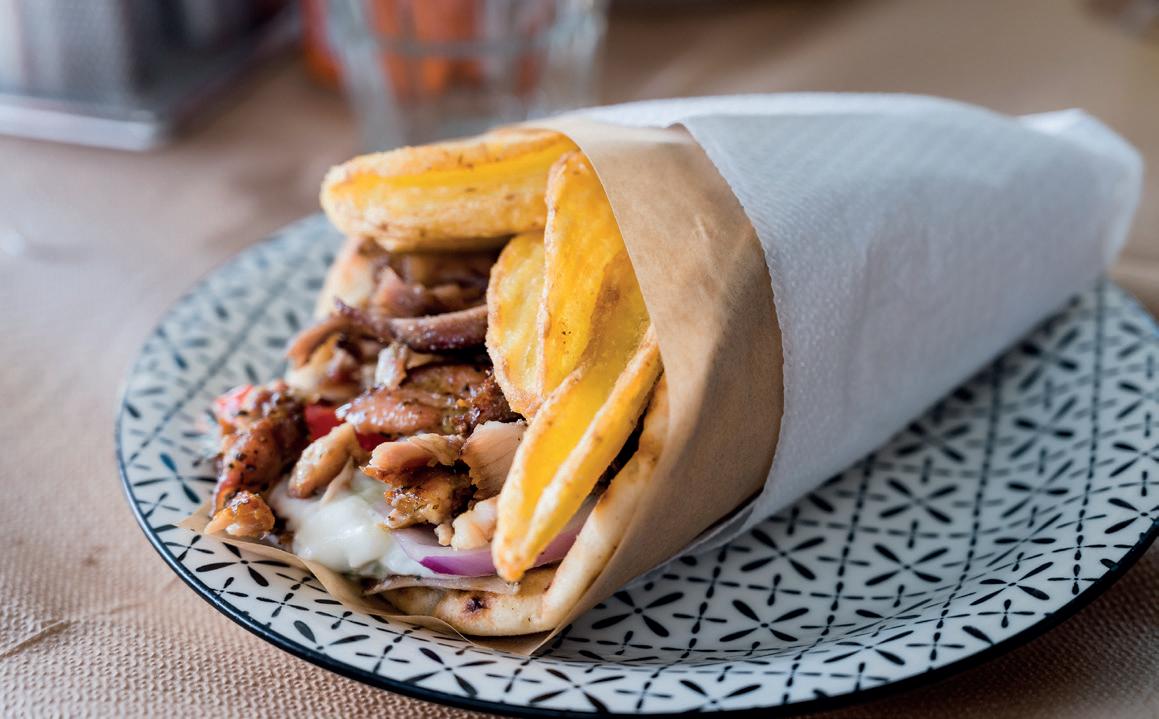
What would be your last meal?
Dubai is my wife’s and my favourite place. The Jumeirah Dar Al Masyaf is truly exceptional.
On top of that, I was recently surprised with a weekend in Dublin for my 30th with all my best mates. I loved every minute.

Which phone app do you use the most?
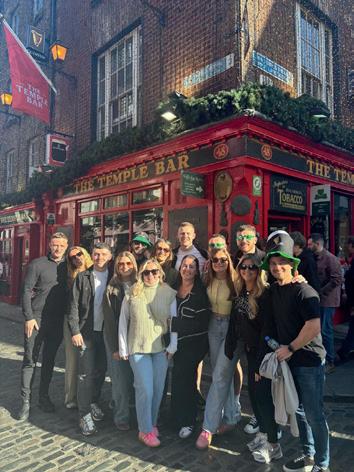
WhatsApp, hands down. Friends’ group chats are often relentless, but I also use it frequently with customers and industry colleagues. It is unreal for quick communication. Instagram is the next best, but it’s easy to get stuck in a reel rut.
Favourite sport?
Football, running and most recently, padel. I never thought I’d be a runner –growing up, the only time I ran was after a ball – but I’ve got the bug now.
When you see running as achieving a speed or distance goal, it becomes a challenge rather than a necessity. I recently clocked my fastest 5 km at 19:47 and ran my first marathon last year. My knees paid for it, though! I’m a big Liverpool FC fan too.
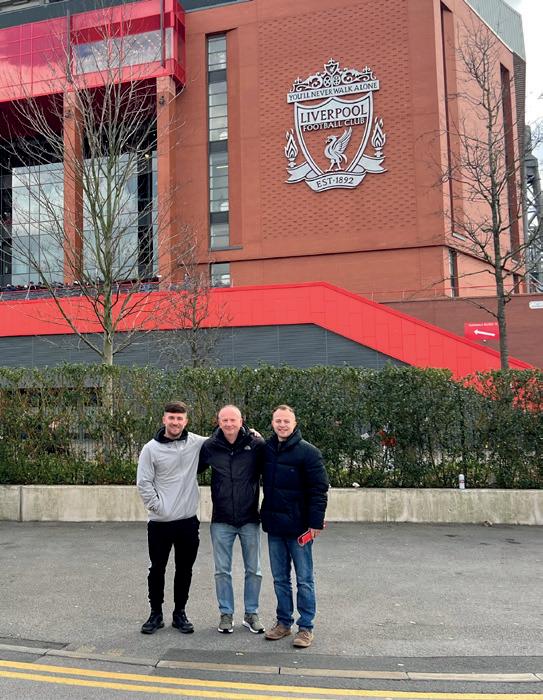
What was the last TV show you binge-watched?
Game of Thrones. Yes, very late to the party – but my god, what an unreal series. I was raving about it to all my colleagues and they were confused, asking if they were in a time warp back to 2015.

This changes every time I’m asked! Right now, chicken gyros is top of the list – but catch me next week and it might be a T-bone steak.


What is at the top of your bucket list?
To travel more around Italy, especially the Amalfi Coast.
